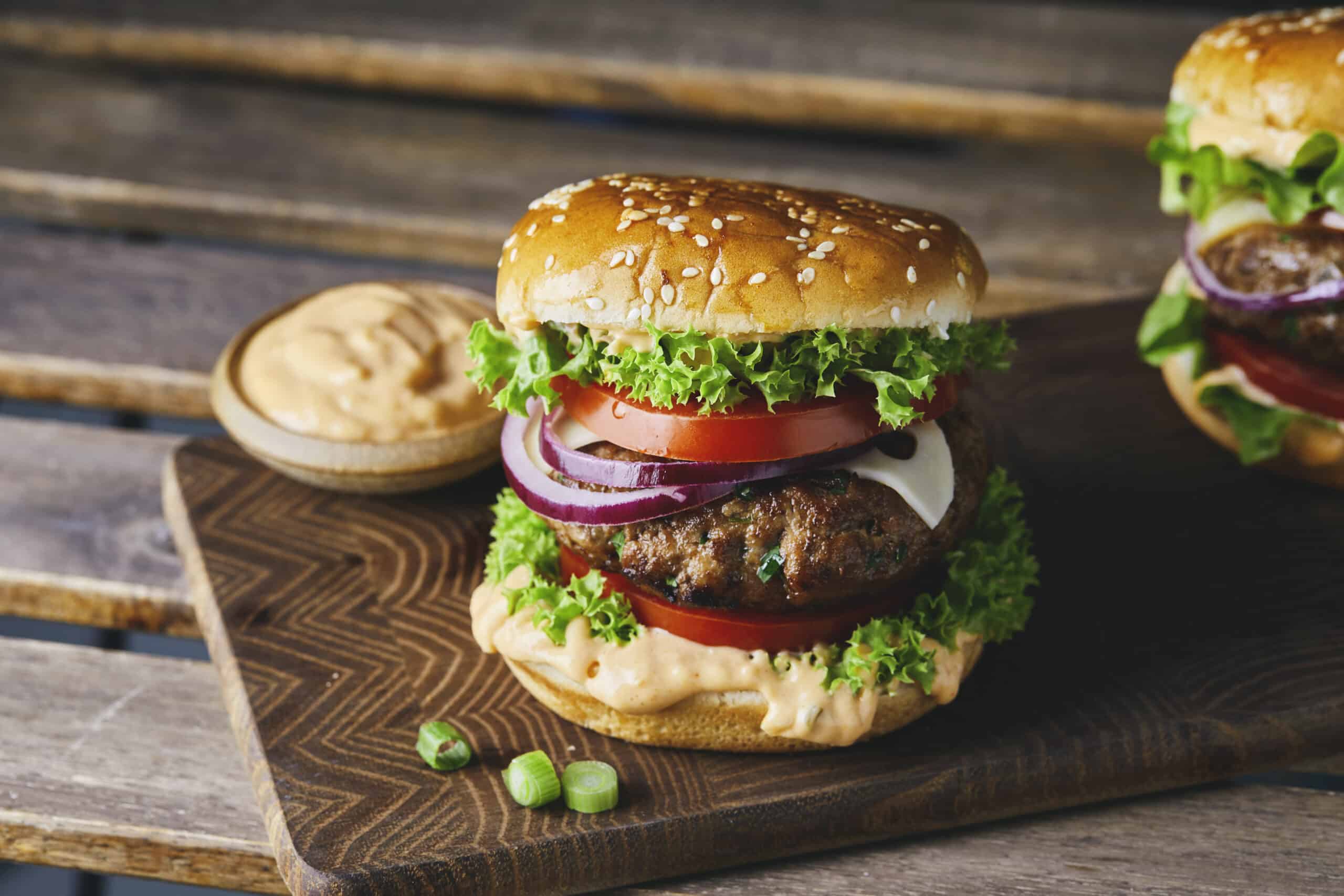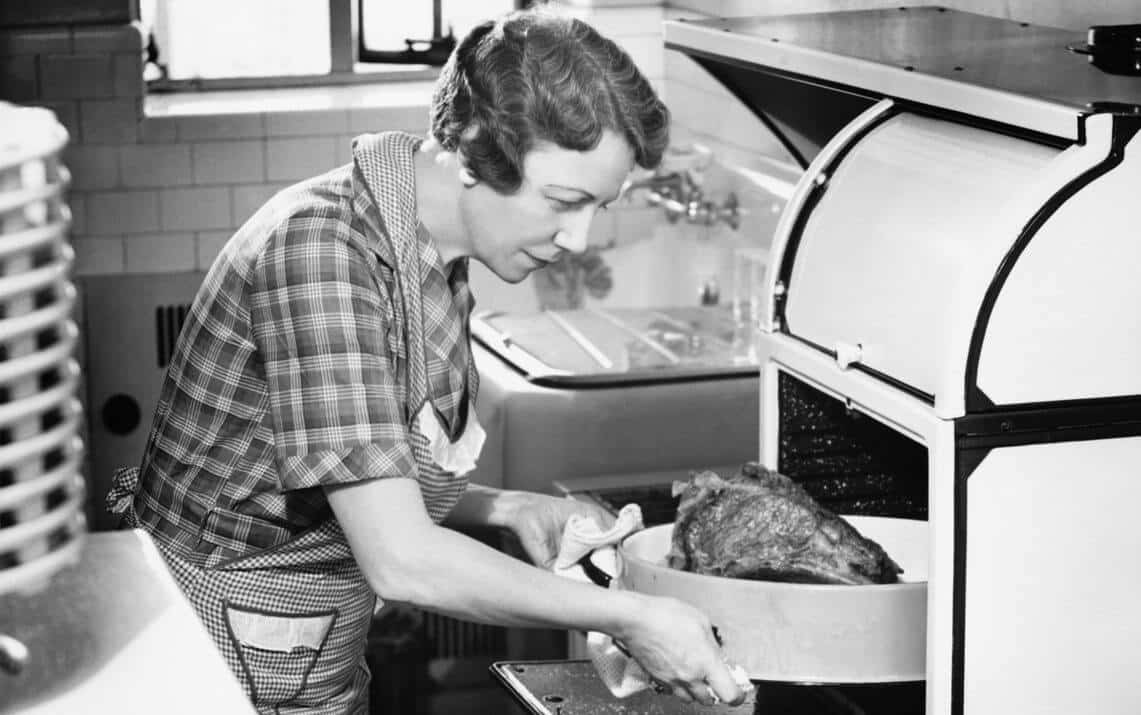Because of WWII, certain 1940s foods were improvised, and a little had to go a long way. As you’ll come to see, people got creative.
Gold Nugget Cake
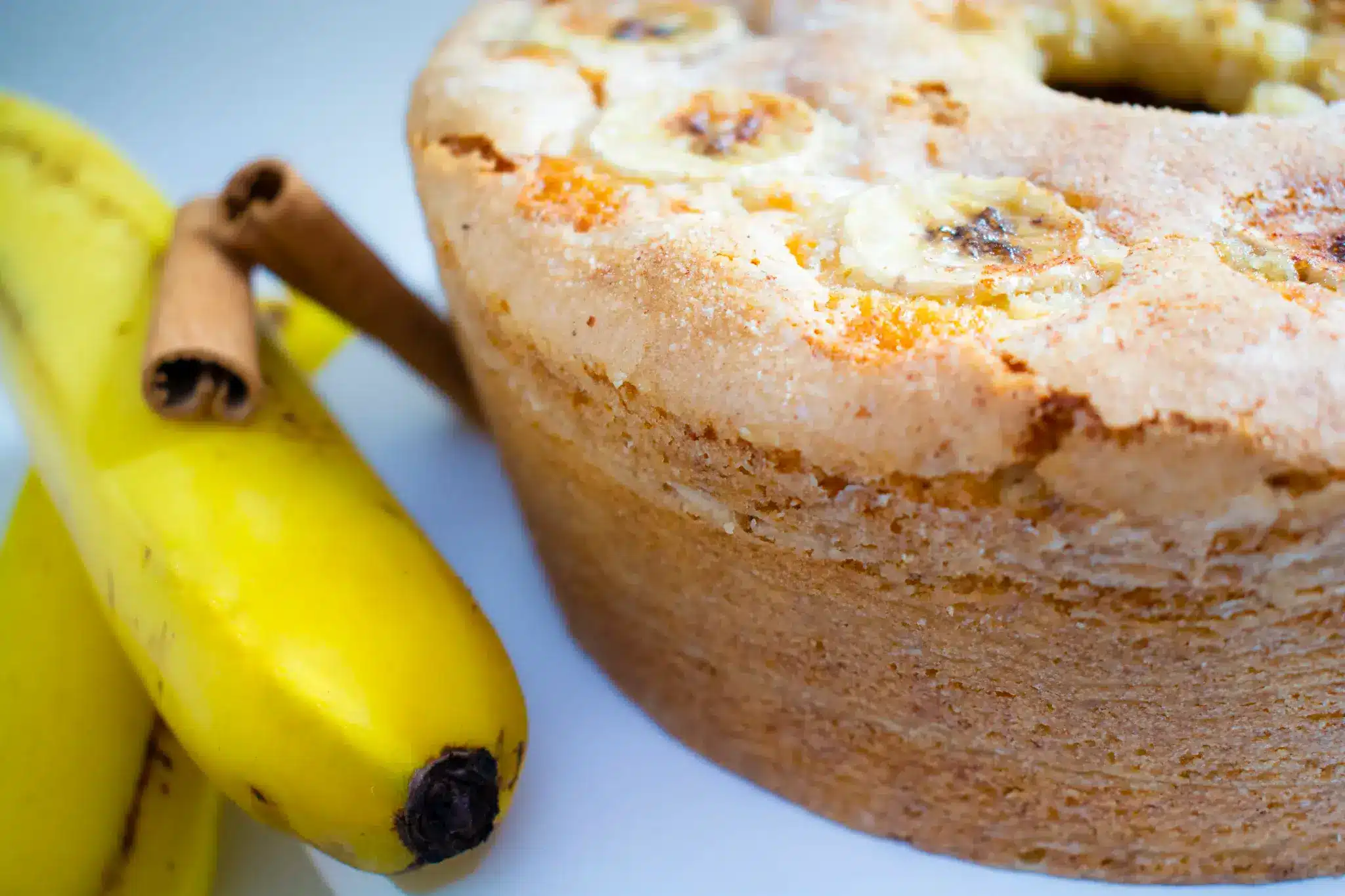
It turns out that banana bread isn’t the only sweet treat that calls for days-old bananas. You can use the fruit in Gold Nugget Cake, too.
This cake was meant to taste similar to banana pudding. It’s deliciously topped with frosting flavored with fresh lemon juice and, of course, bananas.
The dessert is relatively easy to make, and it’s bound to impress any household. People are more interested in things like ice cream cakes nowadays, though.
Did You Know? 🤓💡
Gold Nugget Cake got its name not from real gold, but from canned apricot halves baked into the batter, giving the illusion of glittering nuggets buried in a sweet, buttery crust.
Jell-O Salad
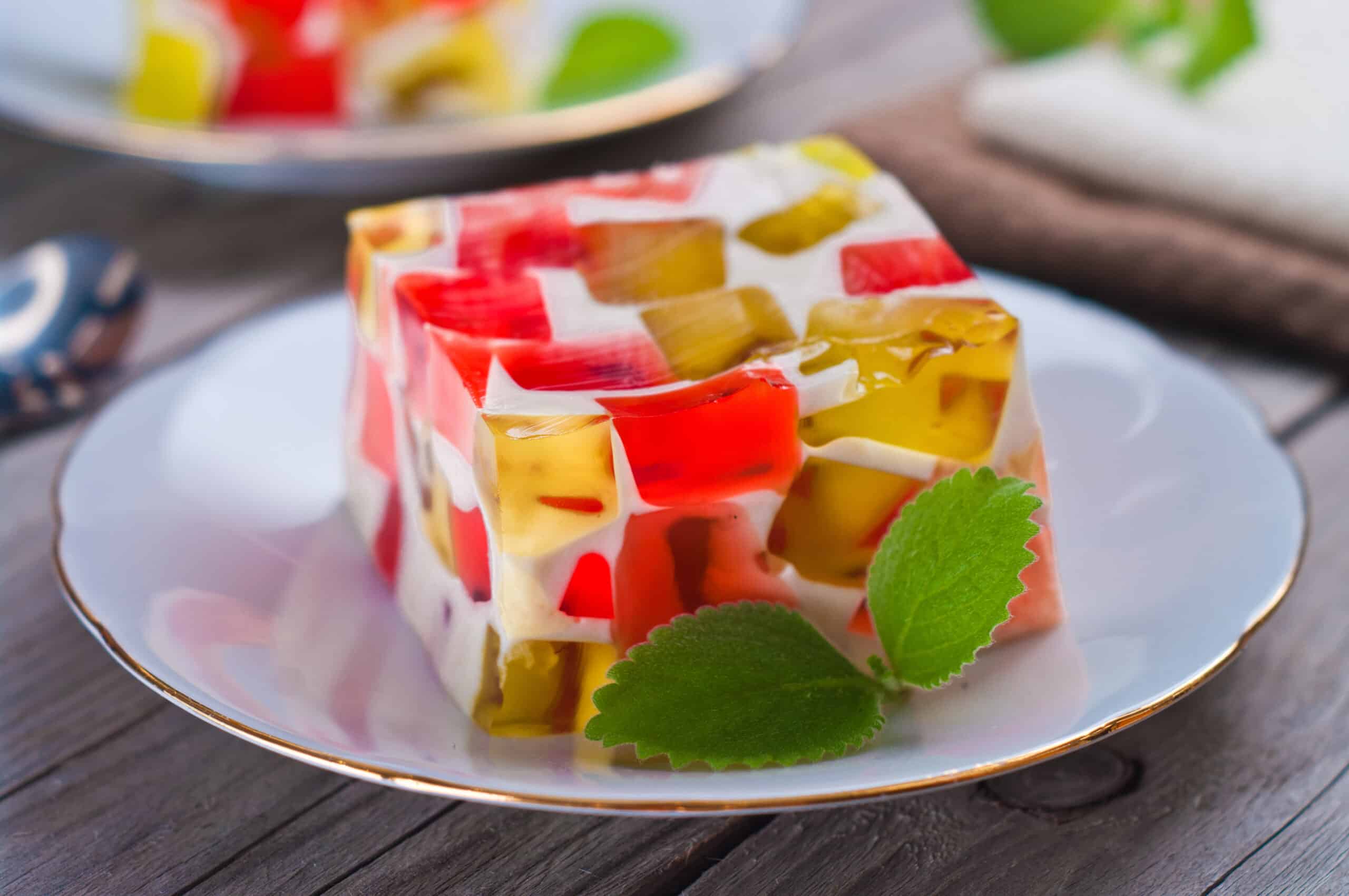
Everyone ate Jell-O in the 1940s. No, these salads didn’t include lettuce. They were made in big, fancy Jell-O molds, and many people took them to parties.
After the war, some Jell-O salads even had fruit or whipped cream. Sounds yummy! The dish was actually pretty popular up until the ’80s.
As you’ll see, people really loved all things Jell-O, to the point where they jellied things that shouldn’t have been. Thankfully, this isn’t one of them.
Did You Know? 🤓💡
During the 1940s, Jell-O Salads were so popular that entire cookbooks were dedicated to them—featuring recipes with ingredients like vinegar, pickles, and seafood suspended in shimmering gelatin.
Lord Woolton Pie
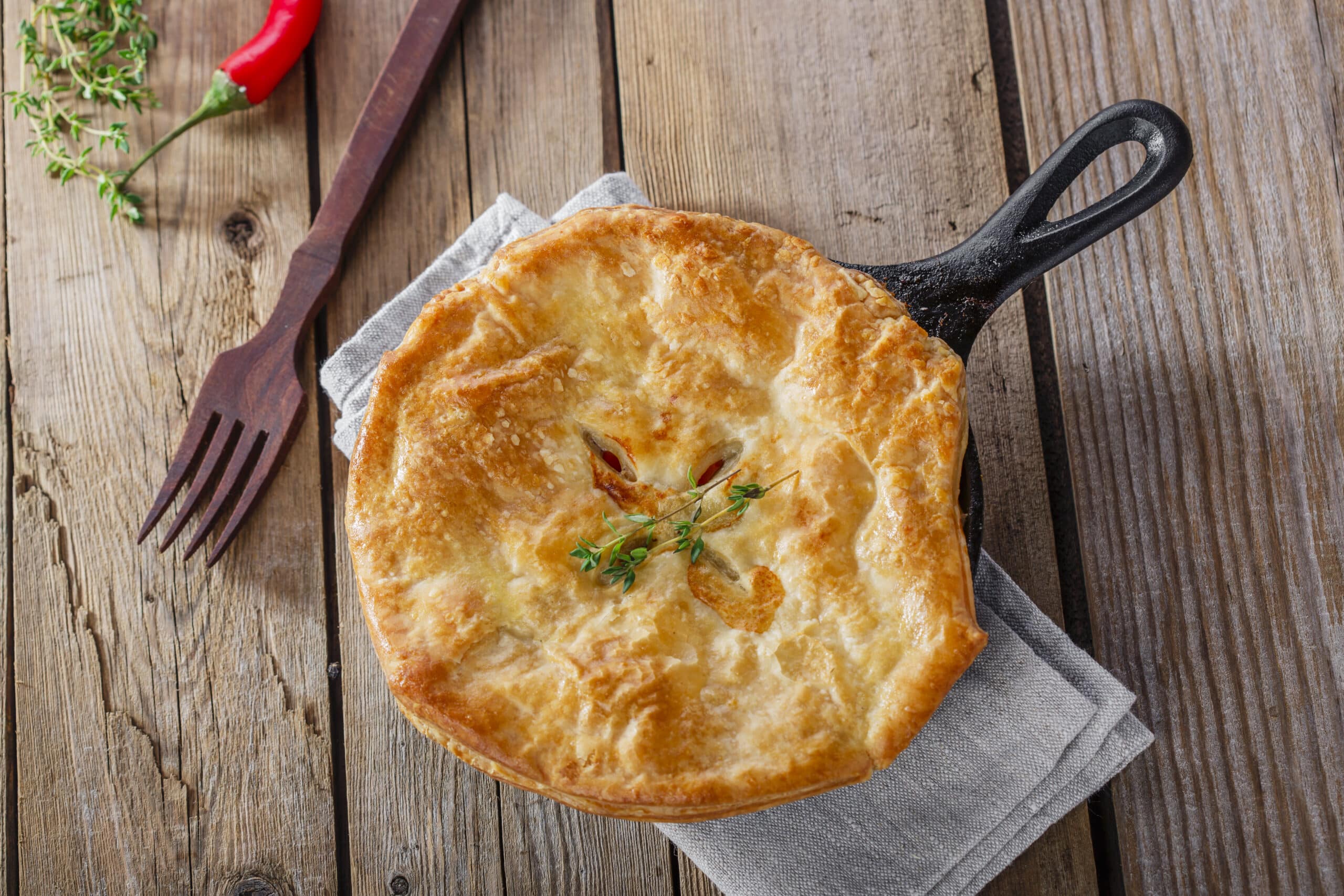
Lord Woolton pie, is a pastry dish of vegetables, popular in Britain during the Second World War when rationing and shortages made other dishes hard to prepare.
The Daily Beast has dubbed it, “The Pie That Won World War II.” While recipes varied, it was basically a blend of turnips, carrots, cauliflower, and oatmeal.
Lord Woolton Pie may no longer be as huge as it once was, but turnips and carrots remain a popular mixture. We’re here for it.
Did You Know? 🤓💡
In 1941, Lord Woolton Pie—a meatless wartime dish—was so heavily promoted by the British government that Lord Woolton himself posed eating it for press photos to encourage public acceptance.
Potato And Hot Dog Salad
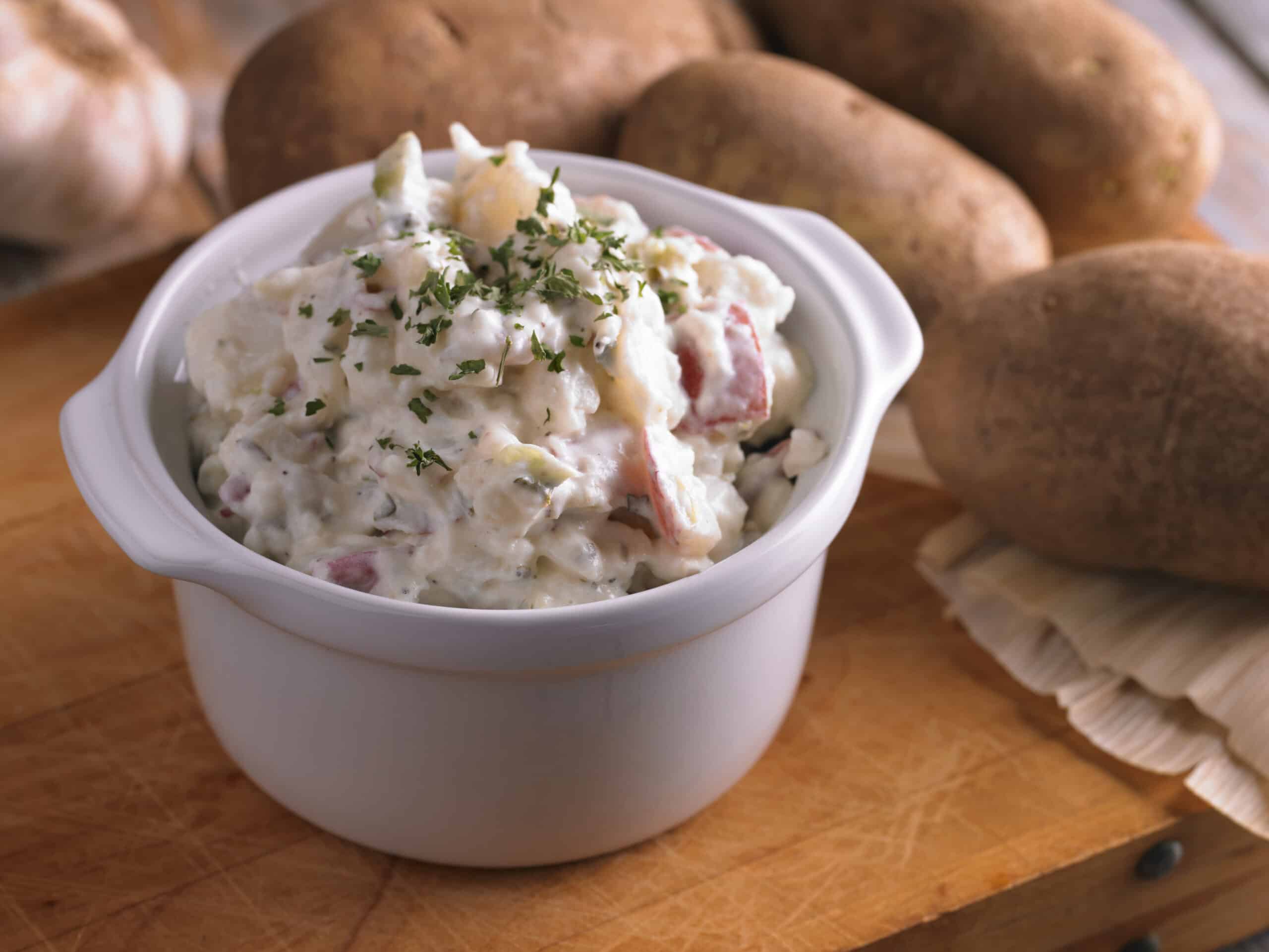
This combination is a prime example of quirky 1940s foods. People jazzed up their potato salad with chopped hot dogs. Not too weird, but not exactly modern.
Americans loved hot dogs, which came to the States from Germany in the 19th century. Hot dog manufacturing really ramped up in the 1940s, though.
In 1939, the White House actually added hot dogs to the presidential menu. We wonder what Franklin Delano Roosevelt liked on his dog. Saurkraut and mustard?
Did You Know? 🤓💡
Potato and Hot Dog Salad was not only a 1940s budget-friendly twist on classic potato salad, but it also turned humble leftovers into a strangely satisfying picnic favorite.
Deviled Lobster
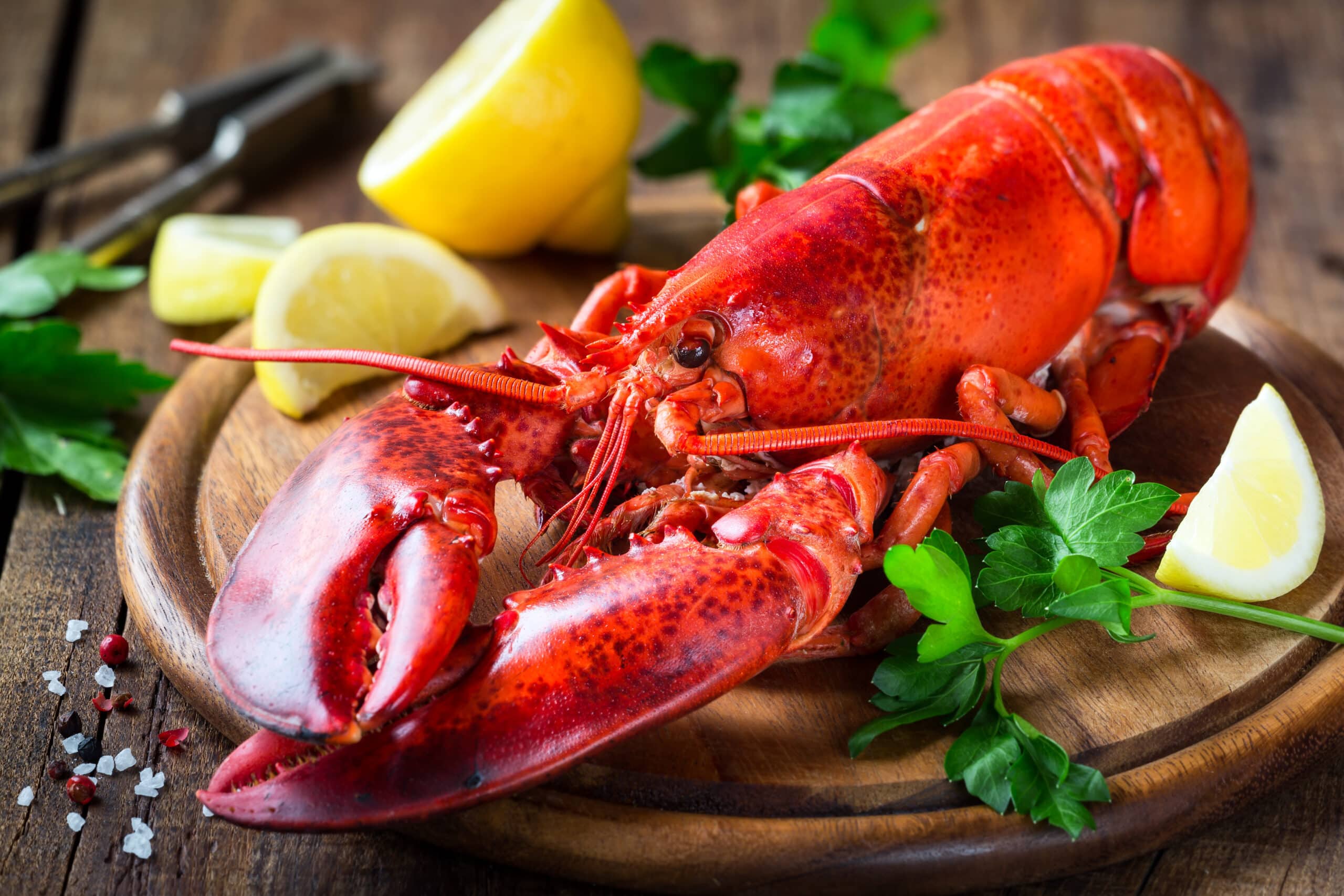
You would be right to associate this time period with rationing. But surprisingly, lobster hasn’t always been the expensive dish you order on special occasions.
For this savory meal, you remove the flesh from the shell and clean it thoroughly. Set it to the side. You’ll use it once your mixture is finished.
When you’re done, use it as a “receptacle” for the lobster mixture. Once the lobster is removed from the oven, garnish with the tail and claws.
Did You Know? 🤓💡
Despite its fancy name, 1940s Deviled Lobster often used canned lobster, a far cry from fresh. Some recipes even stretched the expensive ingredient by bulking it up with mashed potatoes or breadcrumbs, a shocking reality for a “luxury” dish!
Plum Charlotte
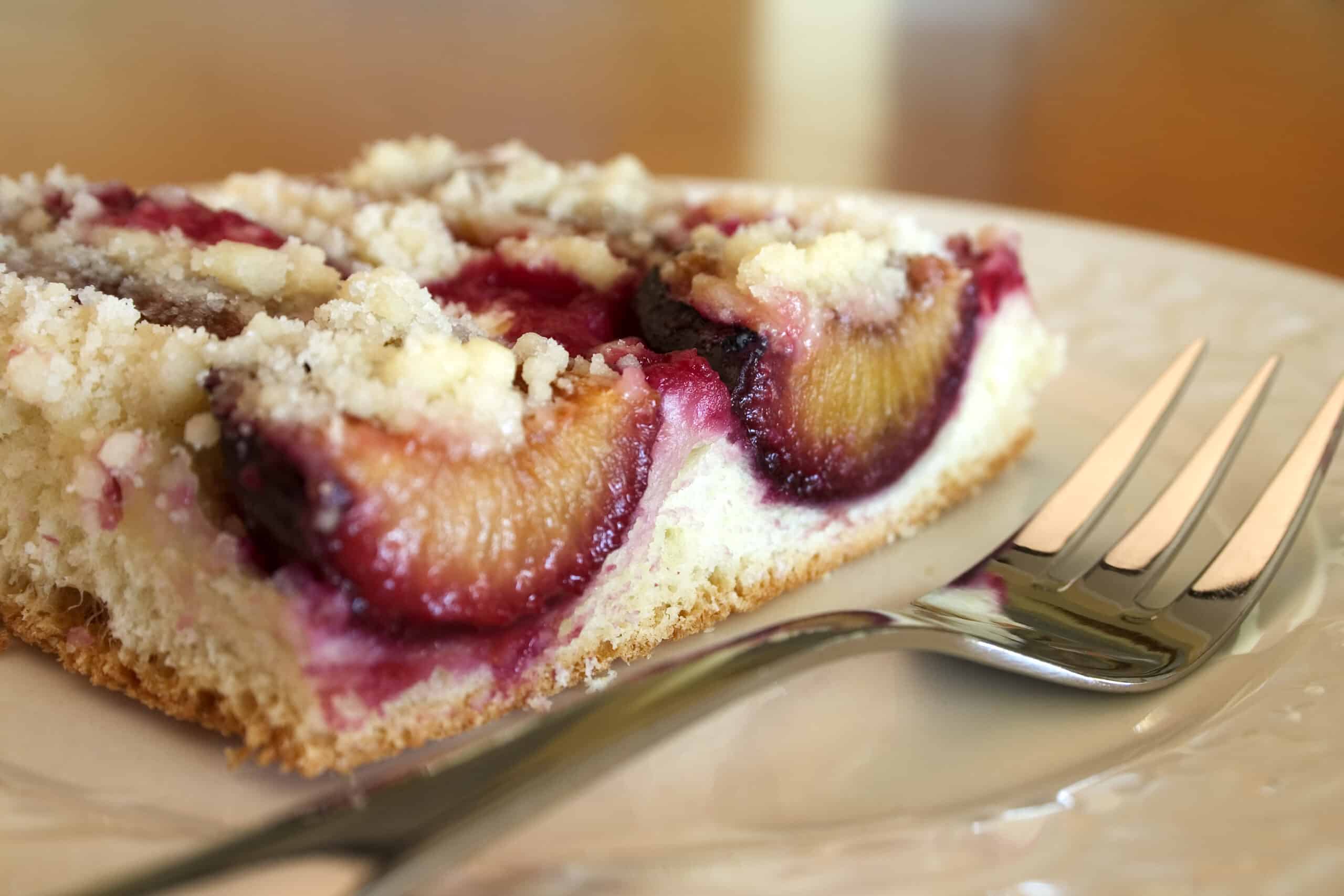
This dessert is solely based on old food, making it perfect for rationing. Plum Charlotte is made with old fruit, typically plums or apples, and stale bread.
Because the government advised against wasting food, this sweet was actually quite common. People made sure to use all the food that they had on hand, old or not.
In fact, wartime posters asked citizens to waste as little produce as possible. Civilians would give any additional food resources to support the war effort.
Did You Know? 🤓💡
Wartime rationing in the 1940s meant “Plum” Charlotte often contained no actual plums! Ingenious cooks used other fruits like apples or even root vegetables, sweetened and spiced to mimic the flavor of precious plums.
Oslo Meals
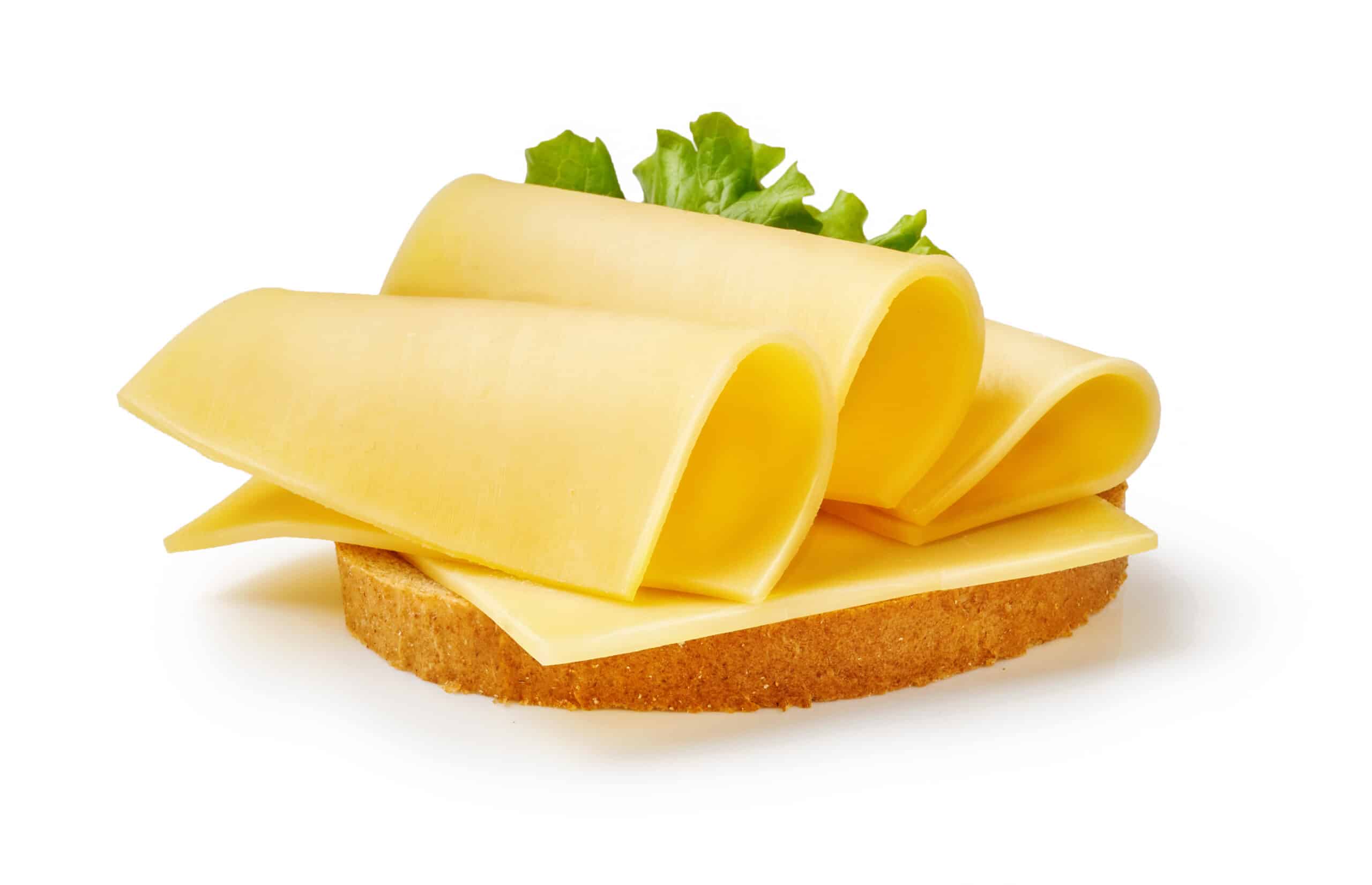
Occasionally referred to as “platters,” Oslo meals included a variety of different things. Many parents feared the rations prevented their kids from eating enough fruits and veggies.
These simple Oslo meals were created to give those children quick and balanced meals. The platters contained bread, cheese, lettuce, and other simple salad ingredients.
They were especially popular in schools, where they were first introduced as an experiment to see if they improved children’s nutrition. Reportedly, the experiment was a success!
Did You Know? 🤓💡
The seemingly simple Oslo Meal, a staple in many countries after World War II, was initially designed in the 1930s to combat malnutrition and often consisted of just milk, wholemeal bread, and grated raw vegetables.
Meatloaf
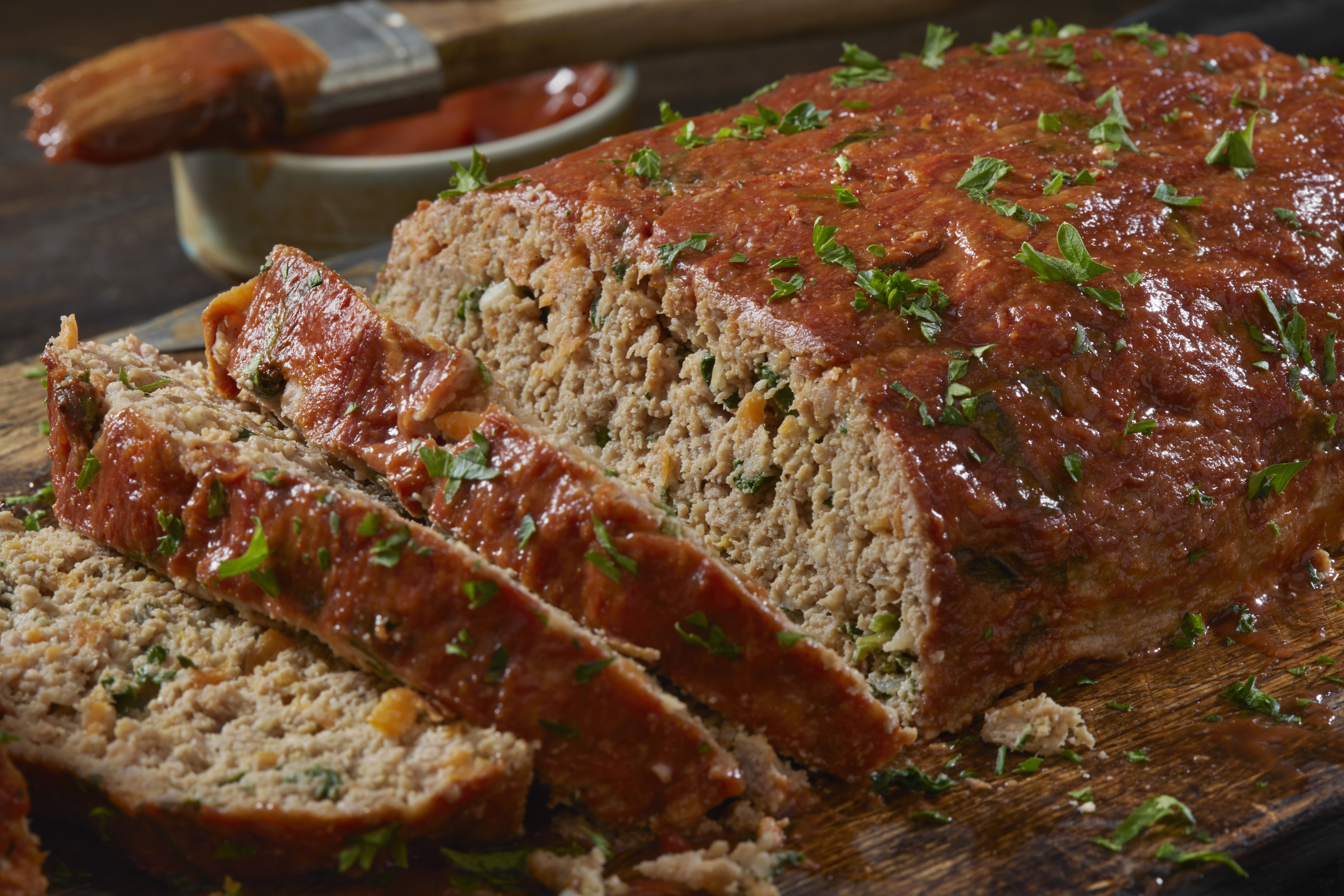
Meatloaf was a pretty big deal back in the 1940s. In fact, Bon Appetit actually called meatloaf “an emblem of wartime ingenuity” in the 1940s.
During that decade, homemakers found that ground beef was cheaper than other proteins like steaks and roasts. And there were so many different recipes for it!
Accordingly, any meal that called for ground beef helped stretch their food budget. It was filling and cheap, yet still packed with the necessary protein.
Did You Know? 🤓💡
Wartime scarcity meant 1940s meatloaf often stretched meager meat supplies with surprising additions like bread soaked in milk, rolled oats, or even leftover vegetables. Some versions contained more “filler” than actual meat!
Mashed Potatoes
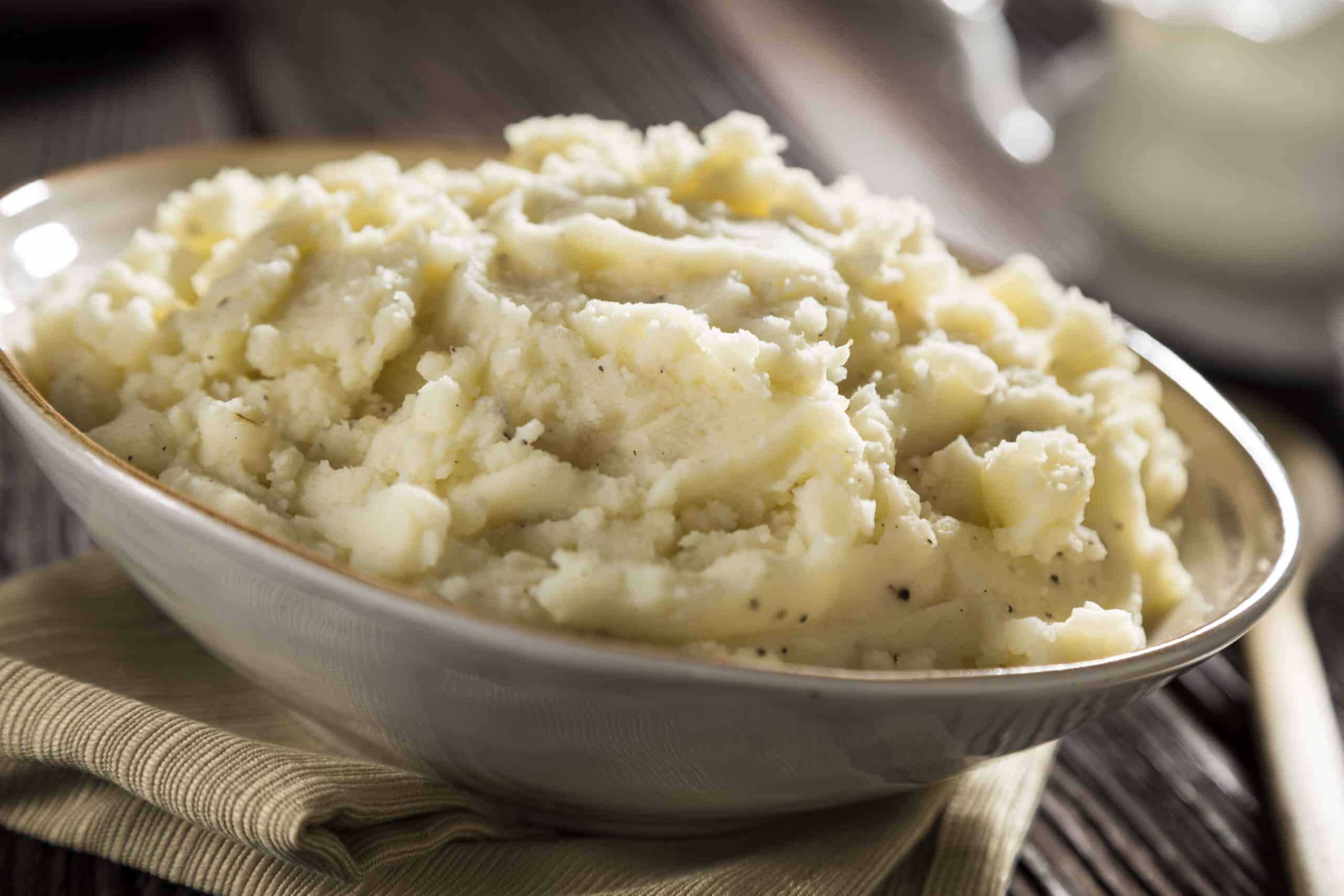
To be fair, mashed potatoes were always popular and always will be. But in the 1940s especially, the creamy spuds could feed an entire family fairly cheaply.
Instant mashed potatoes actually came out in 1946. They quickly became popular because they helped housewives and cooks save a lot of food prep time.
Some instant mixes only needed water. In addition to saving time in the kitchen, they’re super cheap, really easy to make, and are actually pretty good.
Did You Know? 🤓💡
To make mashed potatoes go further during wartime, resourceful cooks sometimes extended them with surprising ingredients like grated turnips or parsnips, cleverly disguised with butter and milk – a testament to wartime ingenuity in the kitchen!
Coleslaw
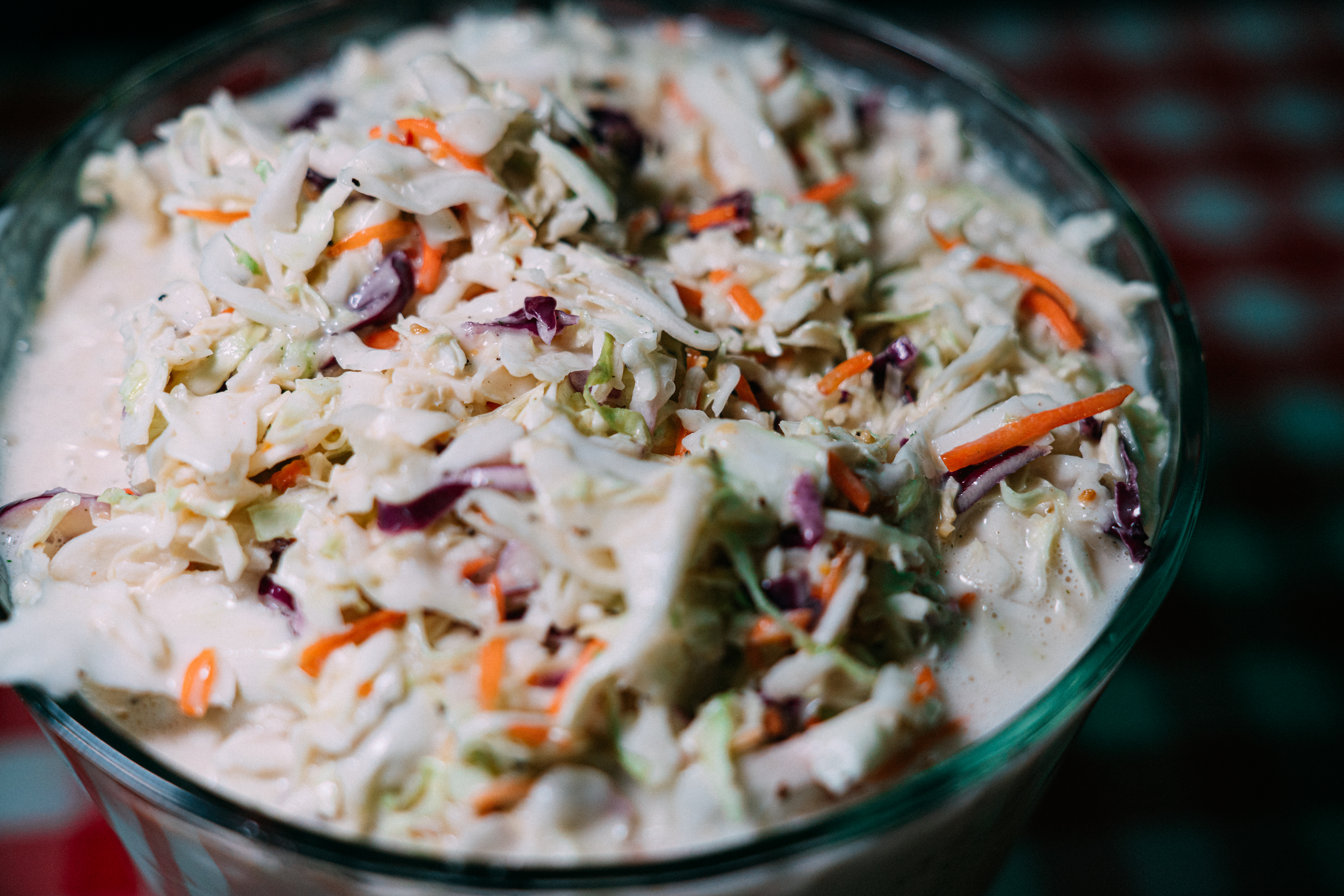
It’s the perfect side dish and fairly easy to make. Who wouldn’t want to dive into some coleslaw, especially if it’s homemade, crunchy, and fresh?
One popular coleslaw recipe from the 1940s actually had a sour cream dressing. Certain people even added Worcestershire sauce to their mixes.
A lot of people were experimenting with different flavors for their basic recipes back then. Who knew there were so many ways to jazz up coleslaw?
Did You Know? 🤓💡
The creamy coleslaw we know today wasn’t always the norm! 1940s versions sometimes featured surprisingly tart dressings made with vinegar and sugar, lacking any mayonnaise due to wartime rationing of fats and eggs.
Jellied Chicken
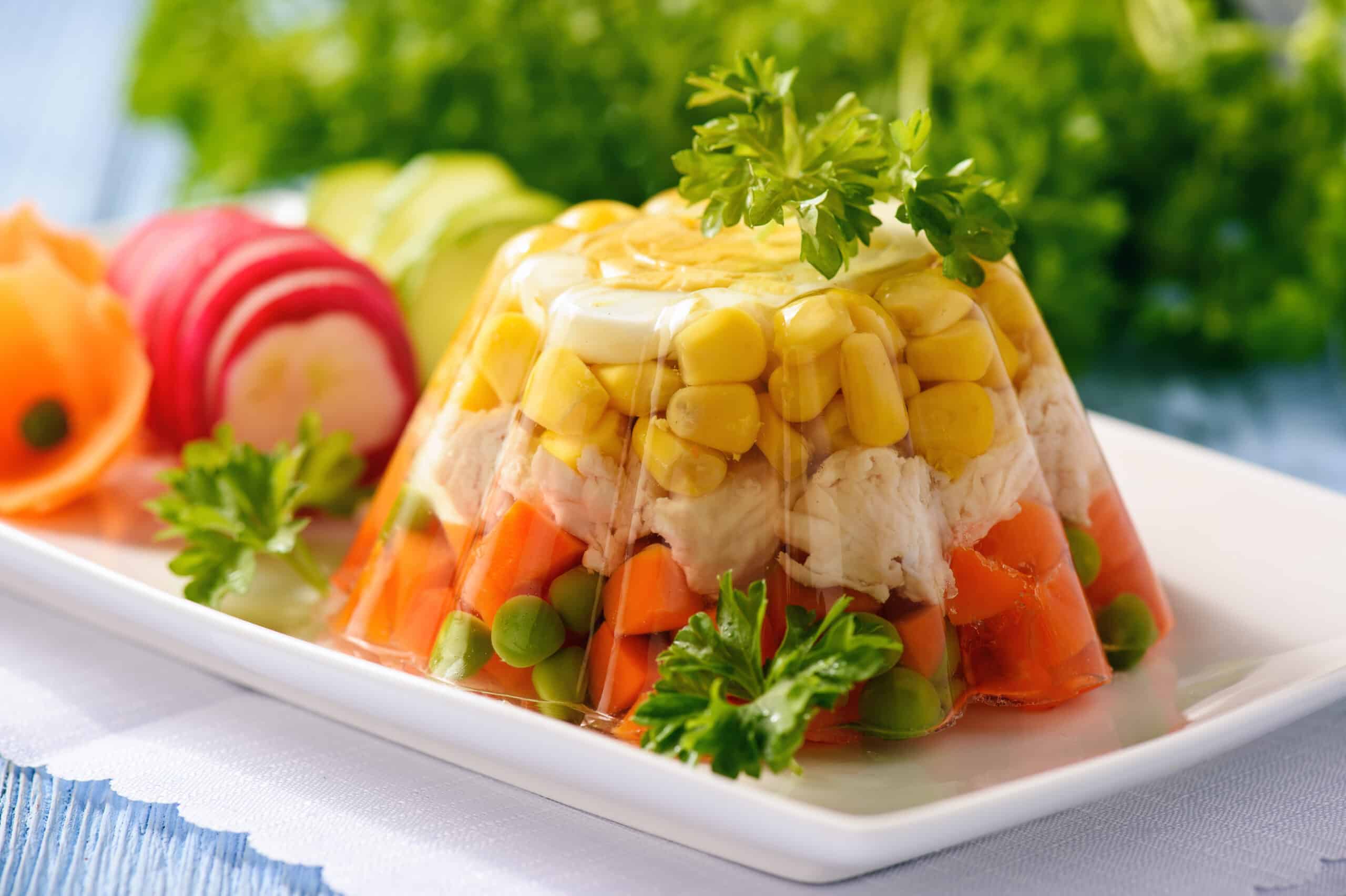
It doesn’t look appetizing, but surprisingly, jellied chicken was popular for a few decades. People certainly seem to be over the gelatin obsession of previous decades.
In the 1940s, though, even savory dishes were jellied. People just wanted to see how far they could take the Jell-O craze, we guess.
Jellied chicken was especially popular, and it supposedly tasted quite good. You can try the recipe for yourself if you’re feeling adventurous.
Did You Know? 🤓💡
Jellied Chicken, a seemingly elegant dish, was sometimes a way to use every part of the bird during the 1940s! Yep, this included boiling down the carcass to extract gelatin, setting even the less desirable bits in a savory mold! Yay or nay?!
Cheerios

Cheerios may be a huge part of your breakfast now, but they were new in the ’40s. Lester Borchardt collaborated with General Mills and invented the cereal in 1941.
There were no additional Cheerio flavors then, but the cereal did go by a different name — Cheeri Oats. We can see the resemblance.
Another company already owned the rights to that name, though. So General Mills agreed to rebrand as Cheerios, and the name (obviously) stuck!
Did You Know? 🤓💡
Early 1940s Cheerios advertisements surprisingly promoted the cereal not just as a breakfast food, but also as a healthy snack for adults. Calling them just for kids? You’re wrong!
York Peppermint Patties
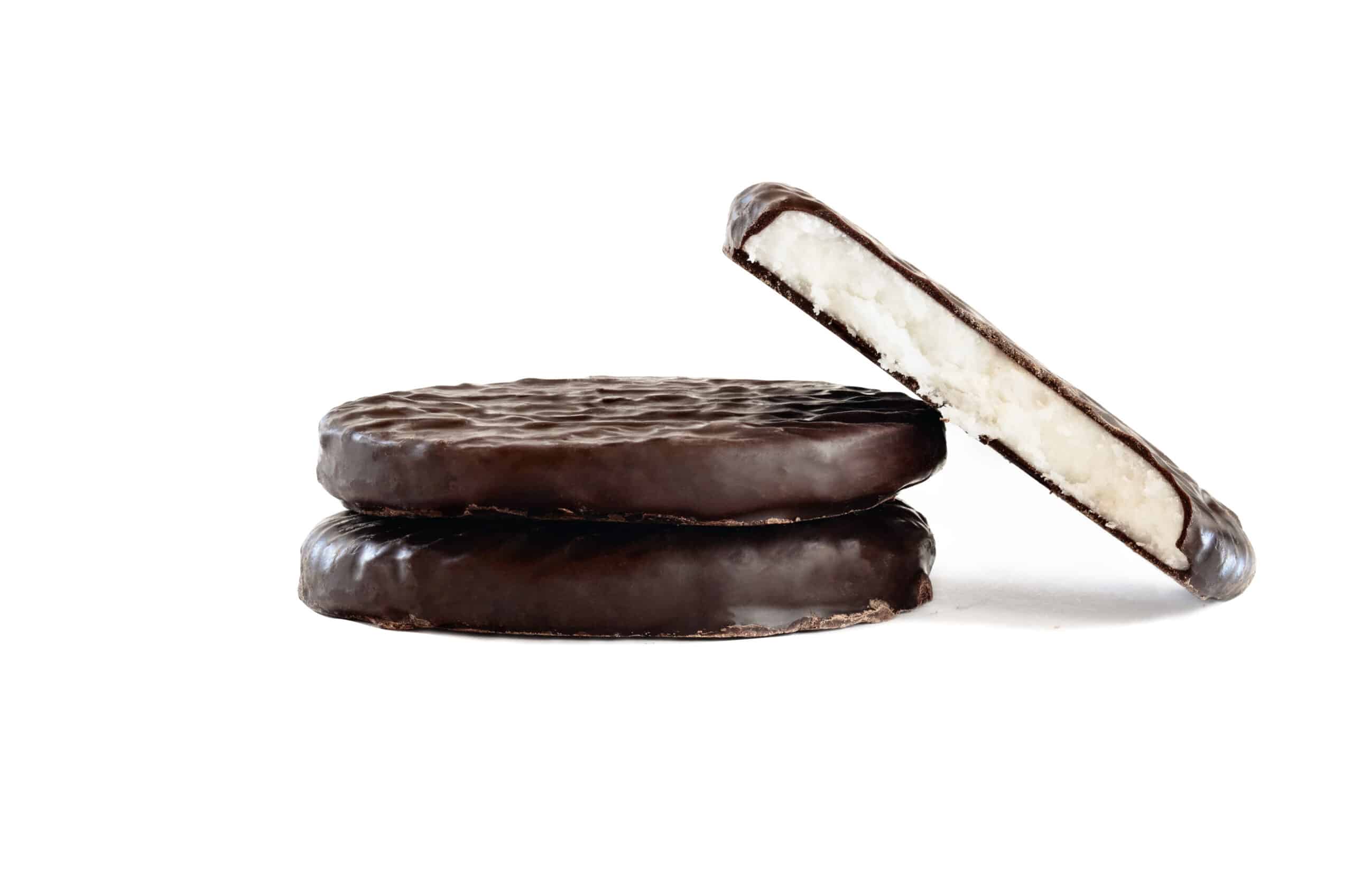
York Peppermint Patties were introduced to the world in 1940. Named after York, PA, the patties were refreshing with a hint of chocolate.
Henry Kessler started selling the treat in 1940 after he learned how to make the mint portion crisp. And we’re glad that he did.
The patties were instant hits. In 1988, Kessler’s brand merged with the Hershey company – the ultimate chocolatier. And the rest is history.
Did You Know? 🤓💡
Despite their association with Pennsylvania, the York Peppermint Pattie wasn’t born there! It originated in York, Nebraska, in 1940, before being acquired by a Pennsylvania company later on – a surprising geographical twist!
Betty Crocker’s Cake Mix
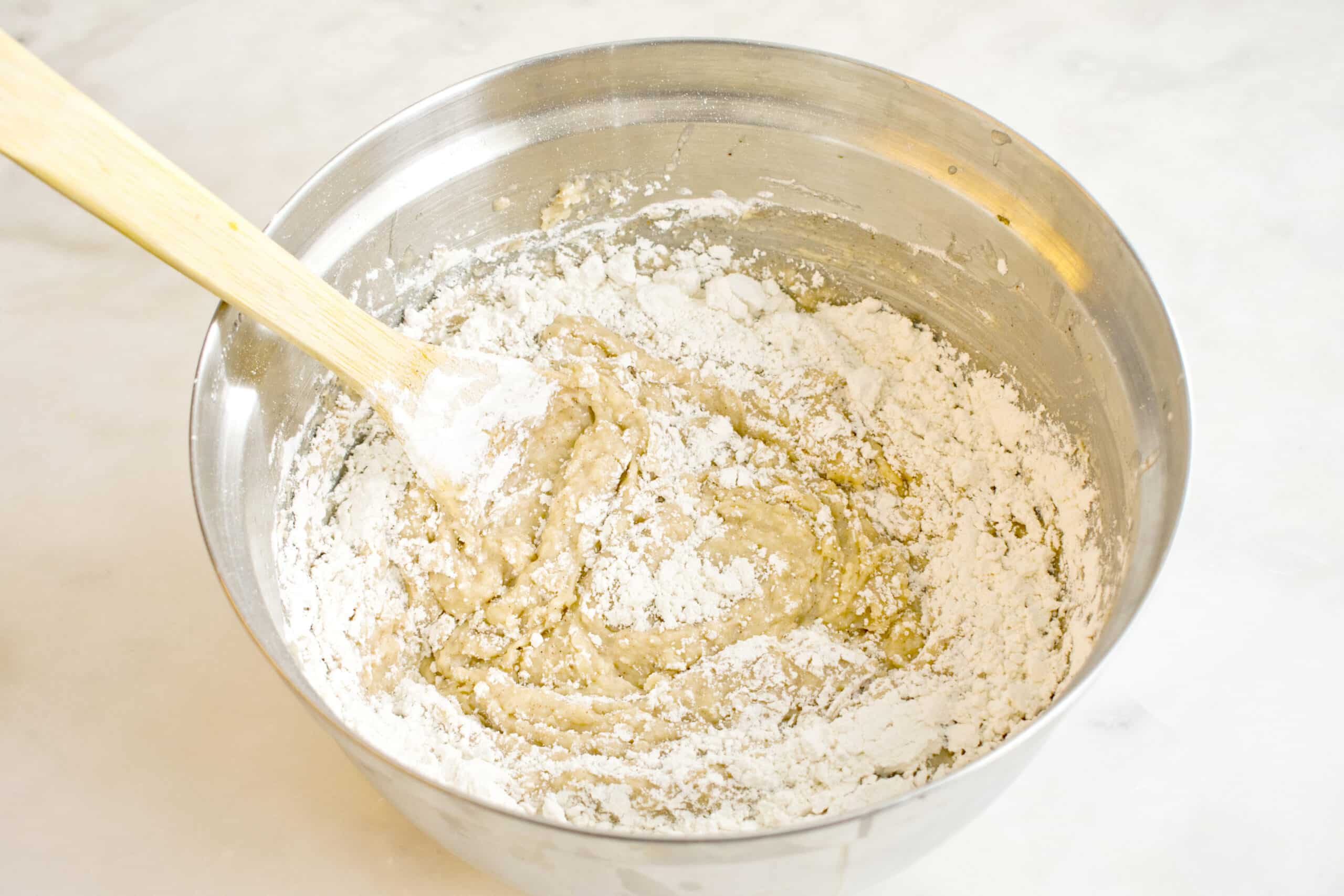
The war made it necessary for more women to get jobs in the 1940s. Consequently, women had less time to cook, and so instant products, like cake mixes, became more popular.
While cake mix originated in the 1930s, it didn’t take off until the ’40s, probably because of this shift in the workforce.
By the end of the decade, more than 200 companies manufactured cake mix products. Betty Crocker was an especially popular brand.
Did You Know? 🤓💡
The initial Betty Crocker cake mixes in the 1940s were so simple that many homemakers felt they weren’t actually “baking”! To boost sales, the recipe was tweaked to require adding fresh eggs, making the consumers to feel more involved! Ah, so pretentious.
Spam
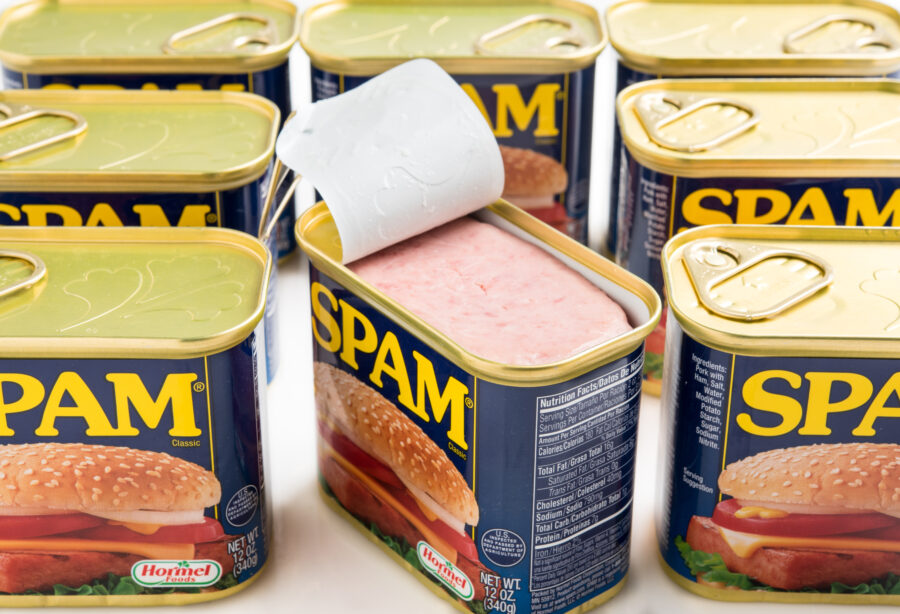
It might seem a little gross now, but spam was kind of a big deal back in the 1940s. The gelatinous dish was released in 1937.
It was a good protein option for families who couldn’t always afford meat. Spam also appeared on many menus for the troops during WWII.
Its versatility went a long way. It could be fried, added to sandwiches, or eaten directly from the jar. Some people still enjoy Spam today.
Did You Know? 🤓💡
Spam was initially seen as a modern convenience in the 1940s! It didn’t require refrigeration, making it a revolutionary food item, especially during wartime when fresh meat was scarce and unreliable. Are you still joining the Spam hate-train today? Or have you changed your mind?
Concentrated Orange Juice
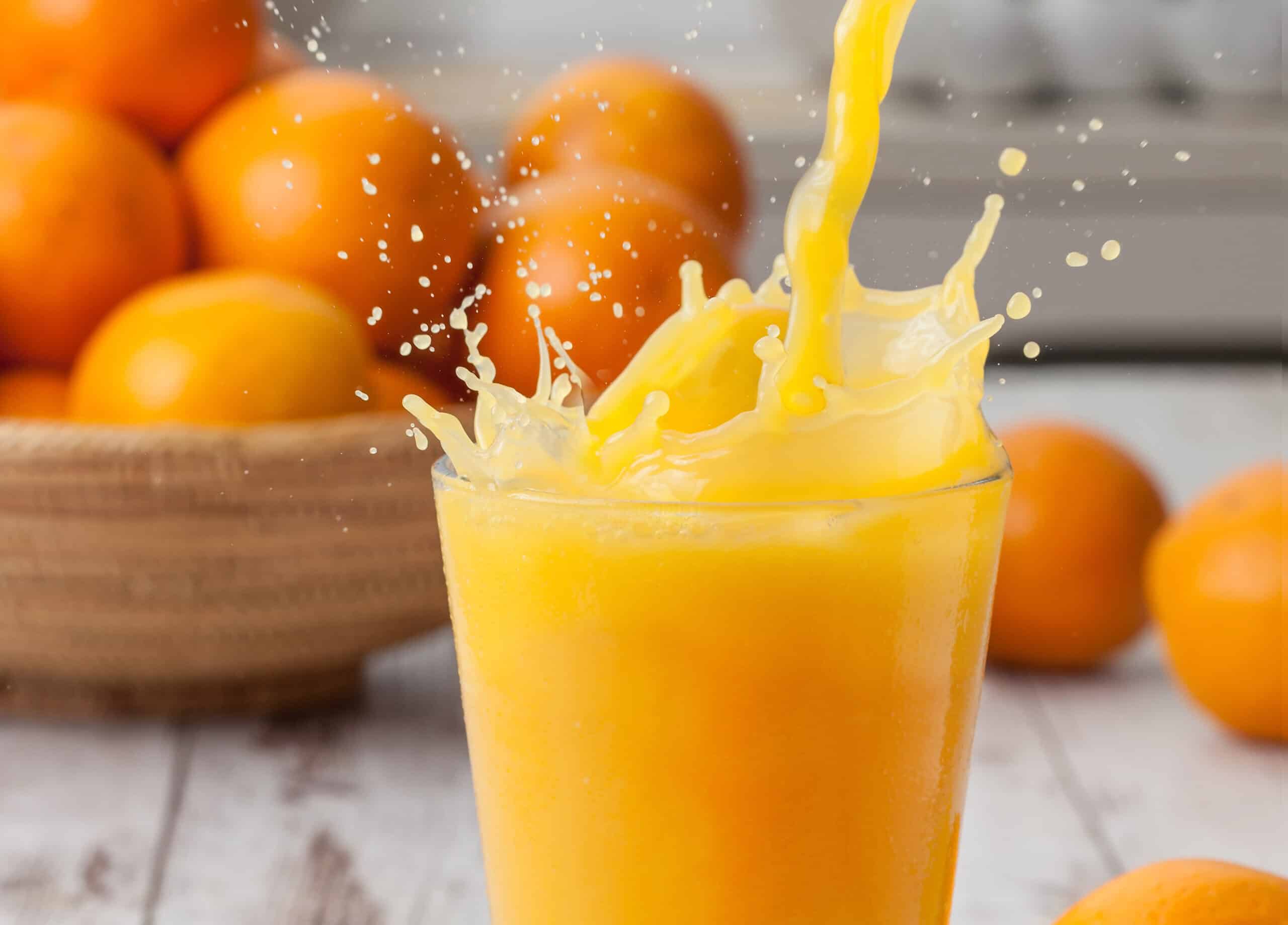
Those cans of frozen juice in the grocery store might seem pretty odd now. It was a very popular drink option in the 1940s, however.
Apparently, in 1942, the Army wanted the troops to get as much Vitamin C as possible, but they didn’t want the vitamin to taste gross.
In 1945, they found a solution, and concentrated orange juices became more popular. The product was originally called Minute Maid — ever heard of it?
Did You Know? 🤓💡
The process of creating concentrated orange juice in the 1940s involved evaporating much of the water, resulting in a thick syrup. This concentrate was nicknamed “Florida Sunshine in a Can,” a testament to its sunny origins and convenience for a nation facing wartime shortages.
Liver Loaf
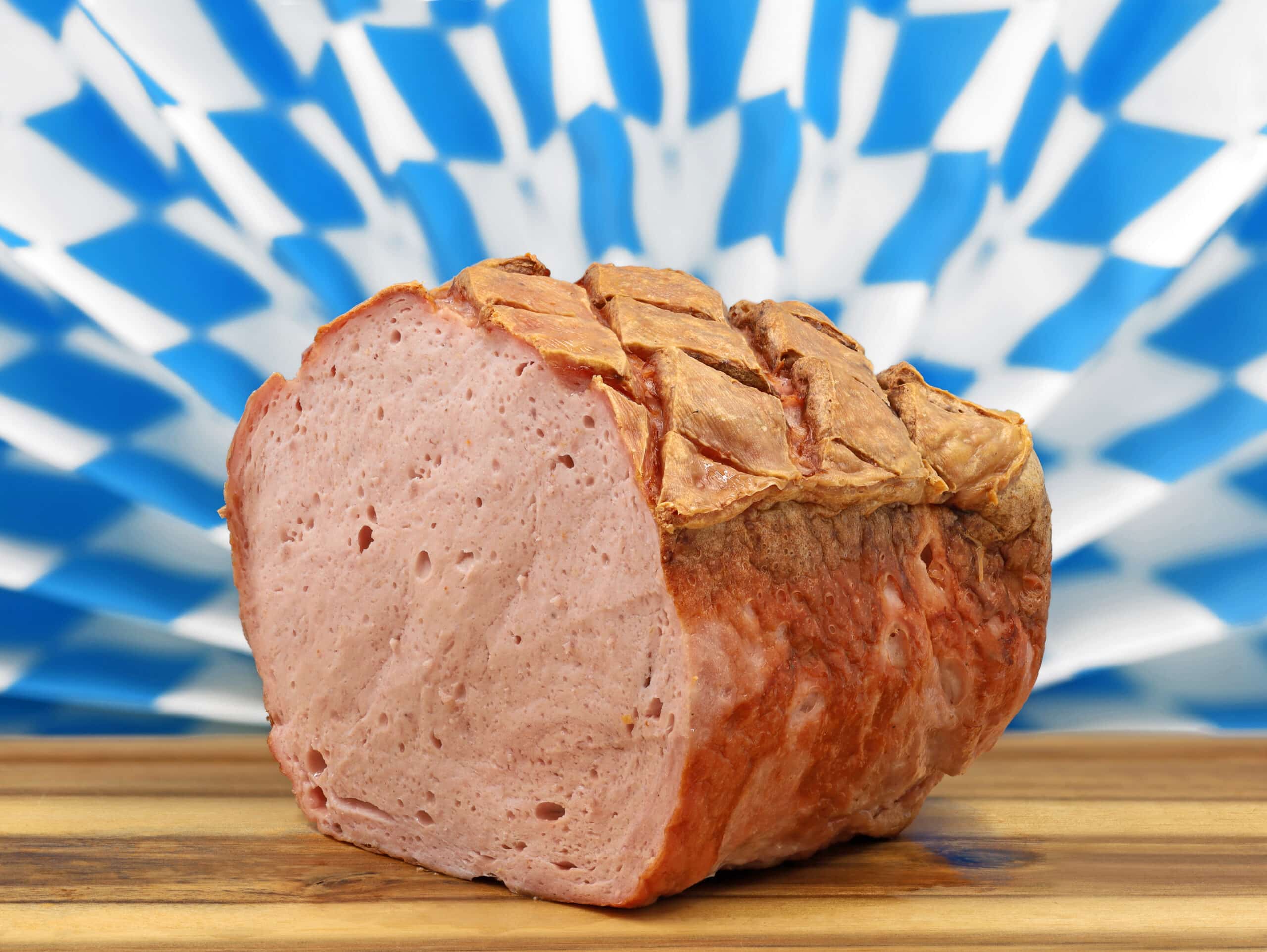
Much like Spam, liver loaf amassed quite a lot of fans. This loaf helped mothers serve cheap and nutritious dinners. And it was often accompanied by some vegetable dish.
Traditionally, the loaf of meat combined pork, bacon, corned beef, and onions. Like ground beef, it provided an alternative to more expensive protein options.
There were lots of ways you could eat it. It might be sliced and laid on a bun or eaten plain. We’re not clamoring to try it.
Did You Know? 🤓💡
To stretch scarce resources, recipes for Liver loaf often incorporated other organ meats, breadcrumbs, and vegetables, making its actual content a surprising— and sometimes unappetizing —mystery. Yes, it wasn’t always about livers!
Homemade Applesauce
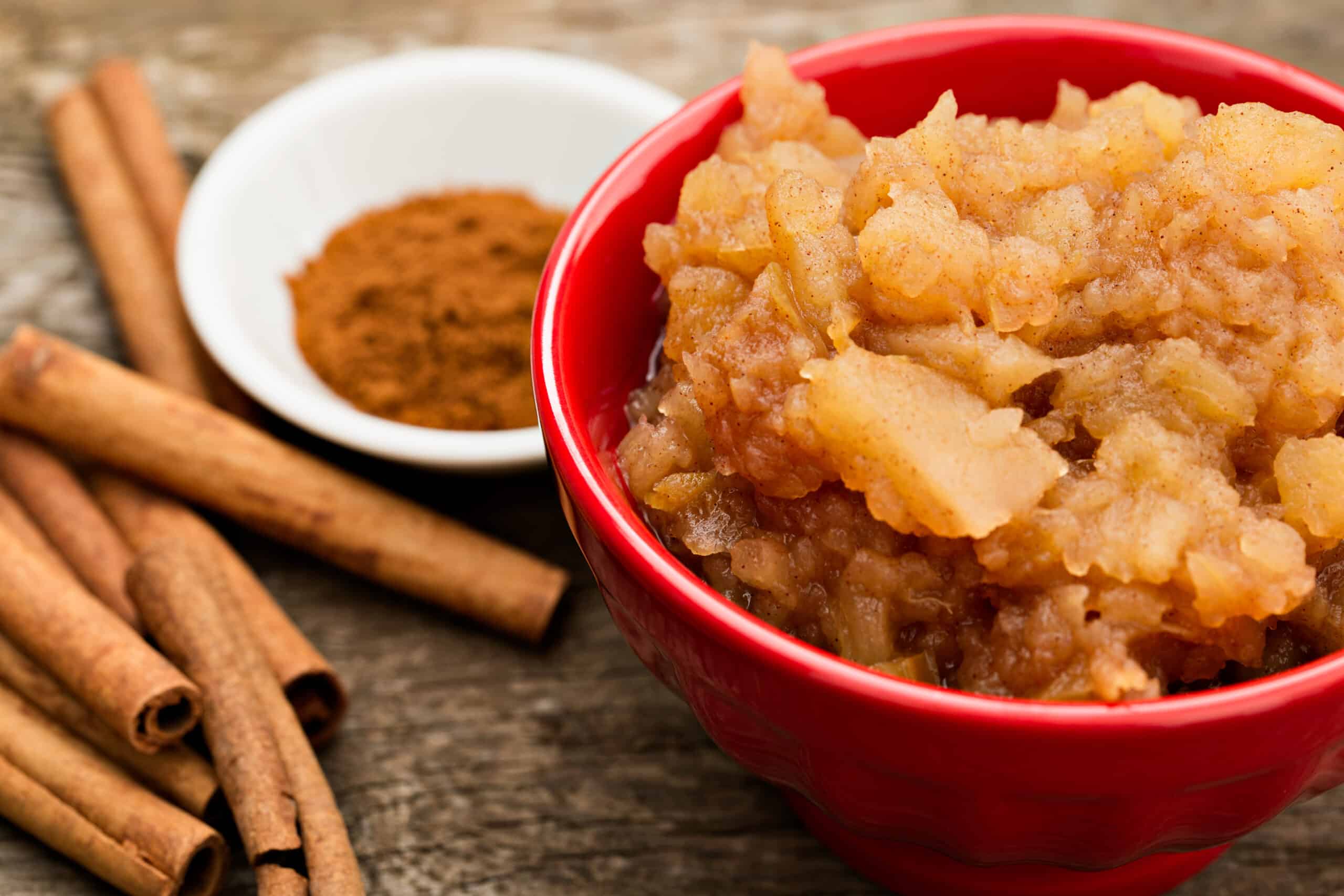
People who lived close to orchards or had access to apple trees likely did a lot of canning. They would harvest the fruit and make smooth apple purees.
Pesticides weren’t even common back then, so people relied on their own canning and preservation methods. While apple sauce is still popular, it’s a lot different now.
These days, most people just think about how idyllic it would be to make apple sauce from scratch. It probably sounds nicer and easier than it was.
Did You Know? 🤓💡
While it is true that apples were abundant in some regions, homemade applesauce in the 1940s sometimes used peelings and cores to minimize waste during wartime rationing. Whoa! That’s what recycling means.
Coconut Cream Pie
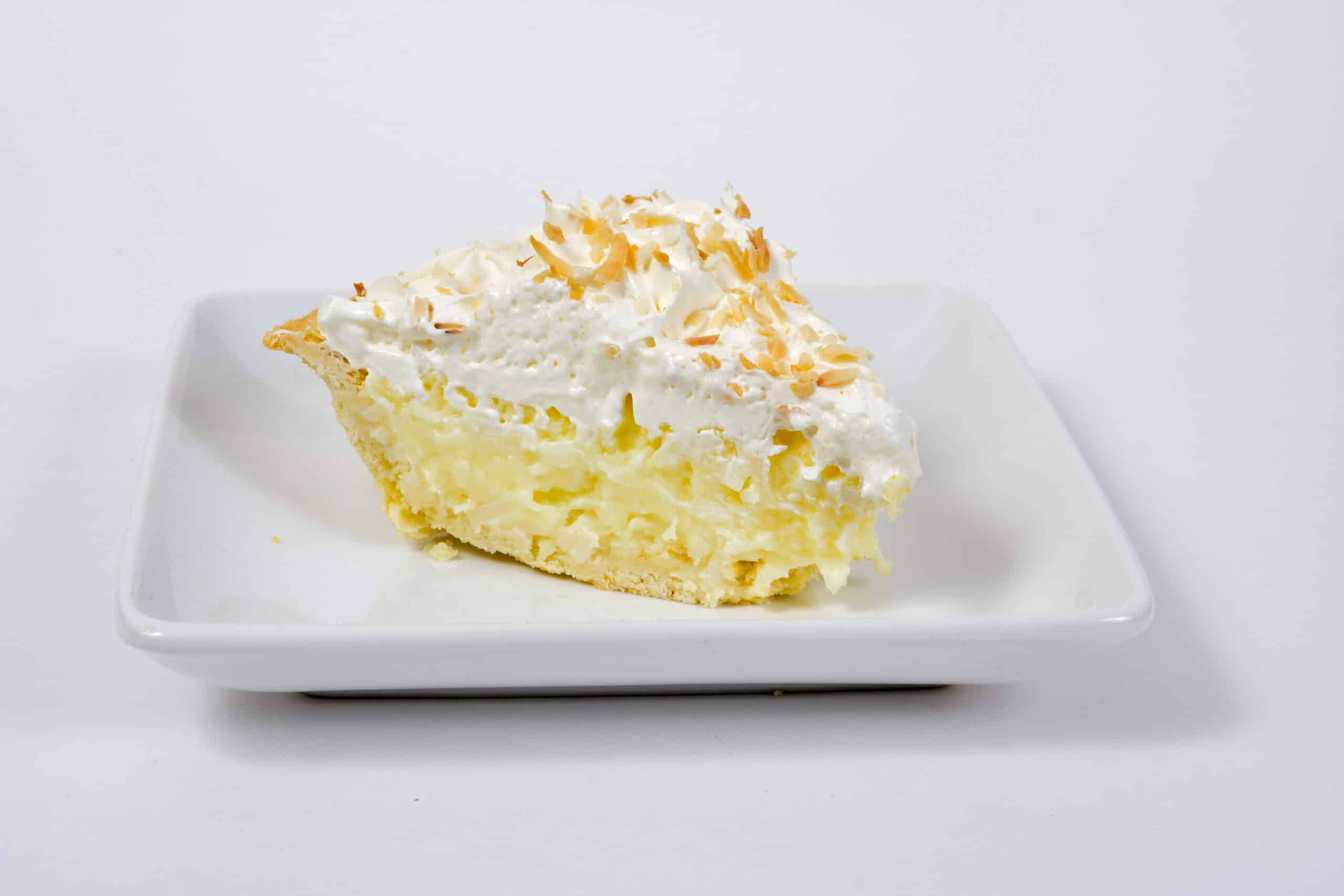
If you’d like a complete history of this delicious pie, it actually has Caribbean roots. When people say this is an old-fashioned dessert, they are right.
Coconut cream pie is hands-down one of the best things people ate during the ’40s, especially when compared to some of the other foods on this list.
Think creamy, homemade custard, topped with strawberries, or the toasted coconut, alone. Absolutely delicious. It’s no wonder people are still eating it.
Did You Know? 🤓💡
Fresh coconuts were a luxury in many parts of the US during the 1940s due to wartime shipping restrictions. So, coconut cream pie often relied on artificial flavorings or desiccated coconut. Not the tropical delight we imagine today!
Bread Pudding
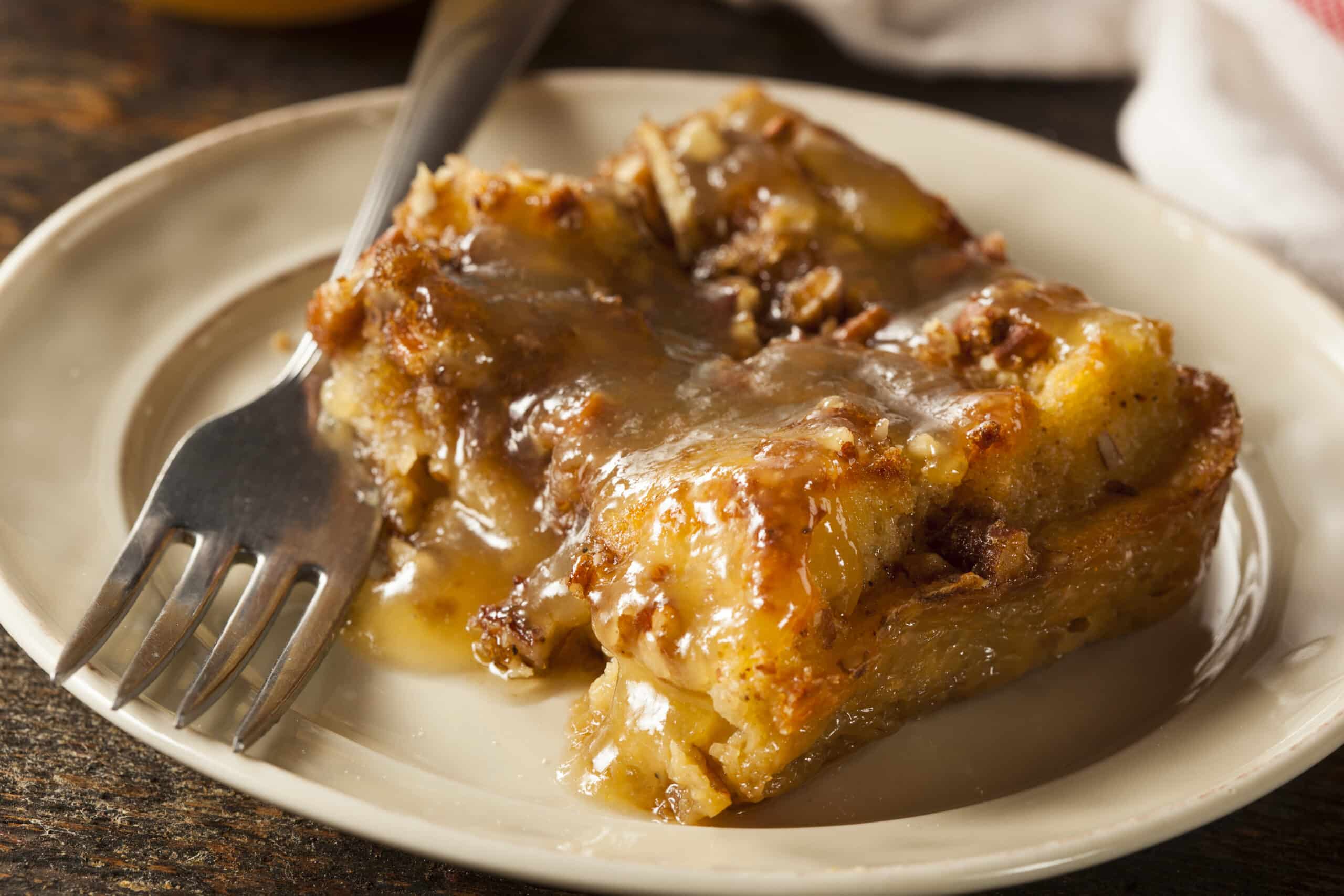
You’ve probably heard of this one before. Bread pudding is a pretty simple dessert, which is essentially just bread soaked in milk.
It has a rich, creamy, melt-in-your-mouth texture. While it was popularized in the 40s, this dish goes back to the 11th and 12th centuries, according to The Daily Gazette.
Food historians found that the recipe came together as a “poor man’s pudding,” as it was popular with the lower classes and a fantastic way to resurrect leftover bread.
Did You Know? 🤓💡
Bread pudding in the 1940s was a champion of resourcefulness! Aside from bread scraps and leftover milk, it also incorporated whatever fruit was on hand – sometimes even vegetable peelings!
Egg Salad
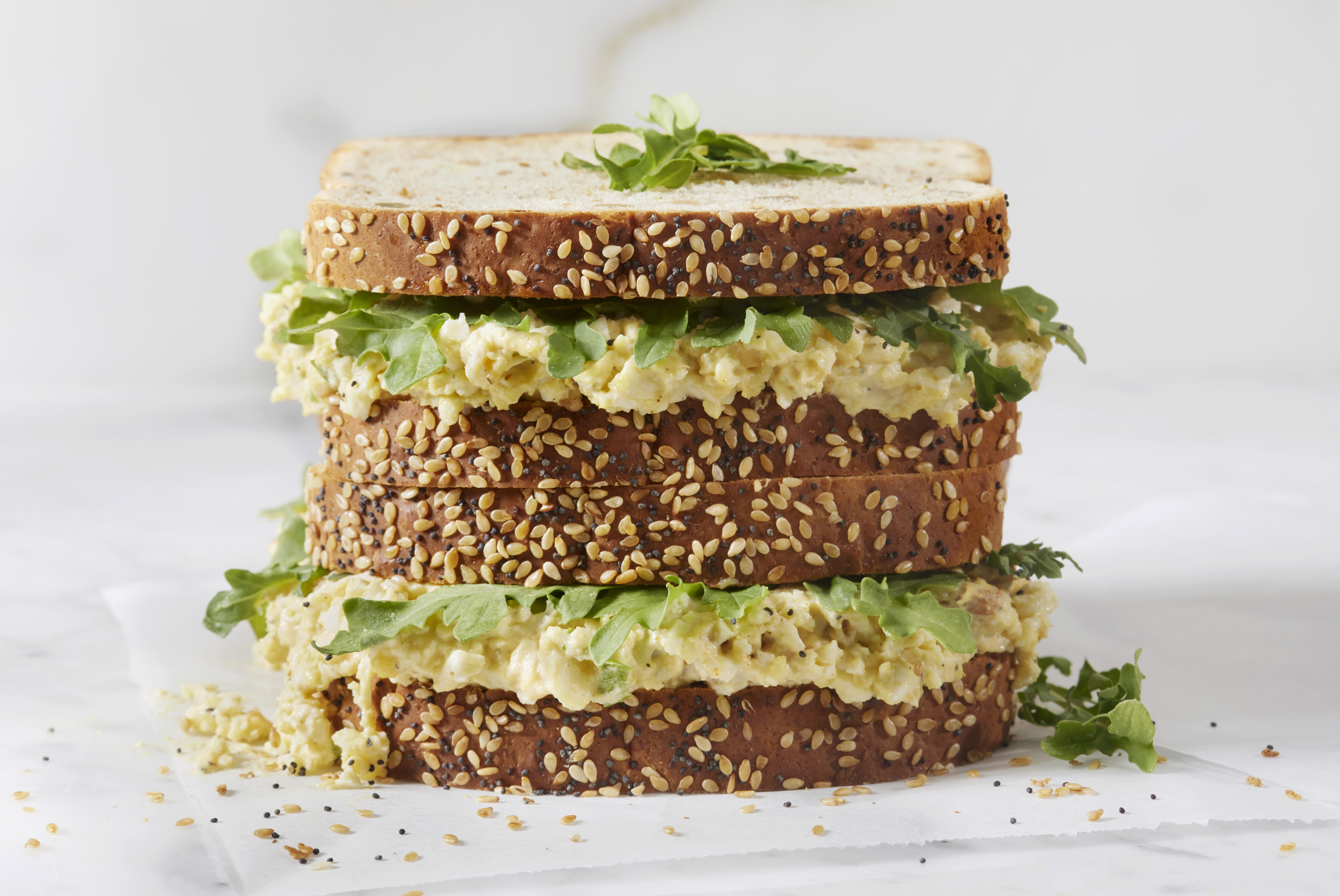
While we may never know who first mixed mayonnaise with hard-cooked eggs to create the first egg salad, it most likely originated in France.
It’s since made its way over to the United States. Like they remain today, egg salad became part of an array of sandwiches, salads, and luncheon dishes.
It’s obvious why people enjoyed them in the 40’s. They’re enjoyable, efficient to make, affordable, and taste great on a sandwich.
Did You Know? 🤓💡
The seemingly simple egg salad sandwich was sometimes a strategic way to use up slightly older eggs during the 1940s. The mayonnaise and other additions helped to mask any less-than-fresh flavor or texture. They’re not innocent at all; they knew what they were doing!
Vegetable Soup
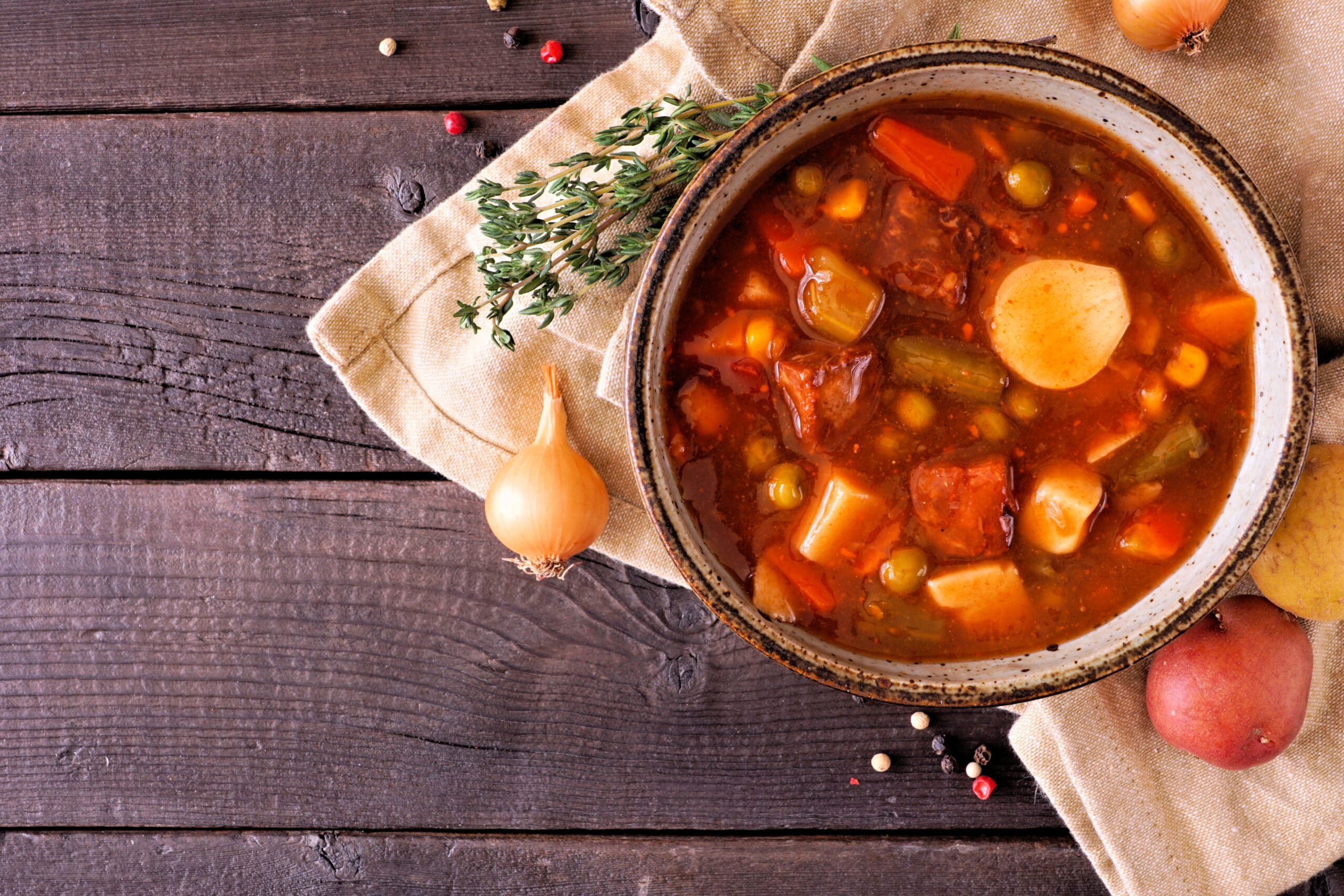
Soups were really popular since women could make them easily. Working moms and wives could throw almost any food scraps into a pot and make them taste good.
Vegetable soup was especially popular because it was nutritious. Typically called “Waste Not Soup,” this vegetable stew was usually hearty enough to make multiple servings.
The best part about it? It didn’t need any meat to make it filling, and it helped increase people’s veggie intake.
Did You Know? 🤓💡
Many 1940s vegetable soup recipes emphasized long cooking times, not just for flavor, but also to tenderize tougher or less desirable vegetable parts that might otherwise be discarded – a practical approach born of necessity.
Irish Soda Bread
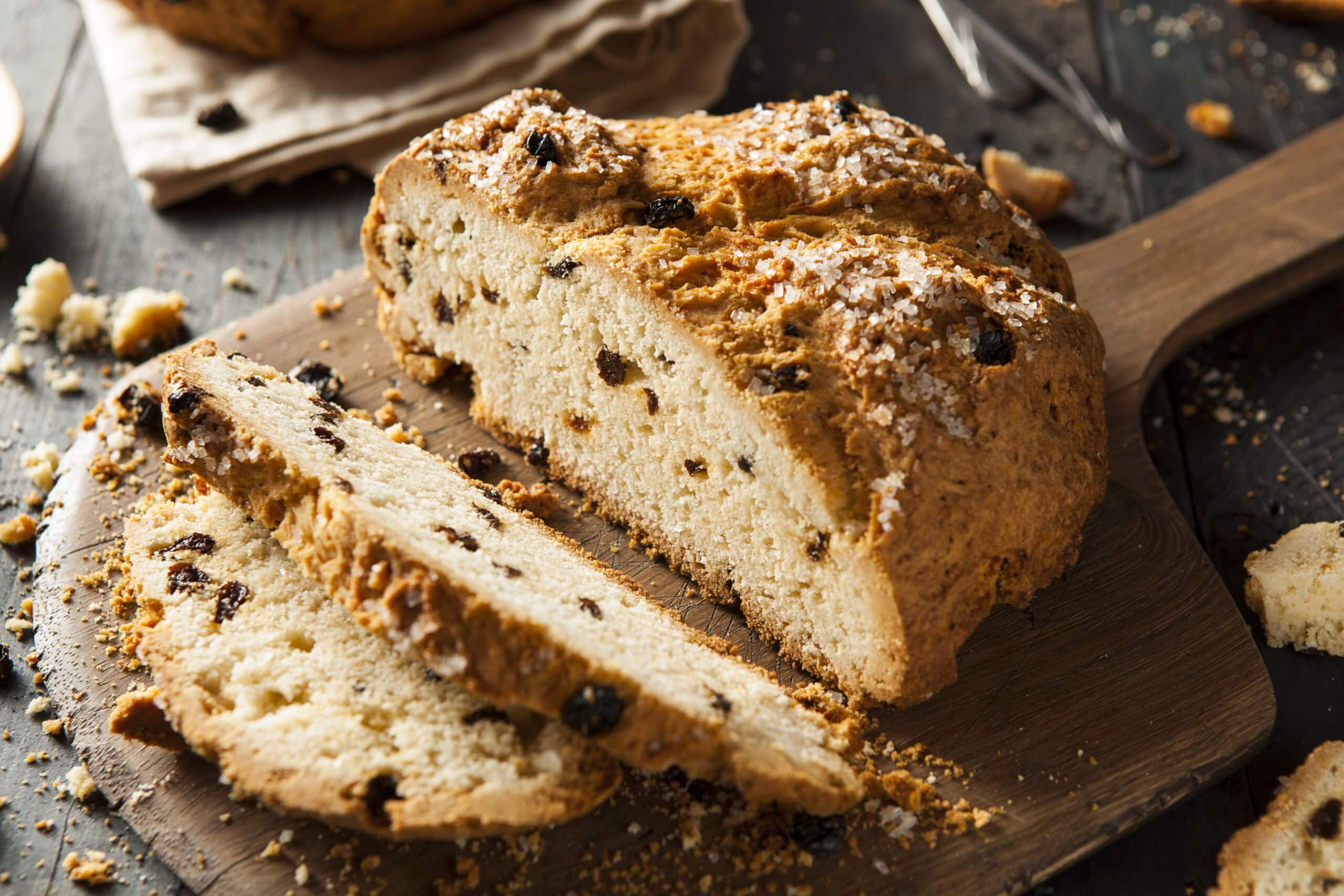
This is a dish created by American Indians using it to leaven their bread before European colonization. Ultimately, it became popular with Americans, who enjoyed the flat cakes.
The ingredients of traditional soda bread are flour, baking soda, salt, and buttermilk. A version of it was also popular with Irish immigrants, whose families Americanized it.
In the ’40s this was paired with soups and stews, and versions included more ingredients like butter, sugars, raisins, or seeds to enhance flavor.
Did You Know? 🤓💡
The “soda” in 1940s Irish Soda Bread wasn’t always commercially produced baking soda! Some resourceful home bakers used wood ash lye as a leavening agent, a practice passed down through generations!
Cheese, Potato, and Onion Pie
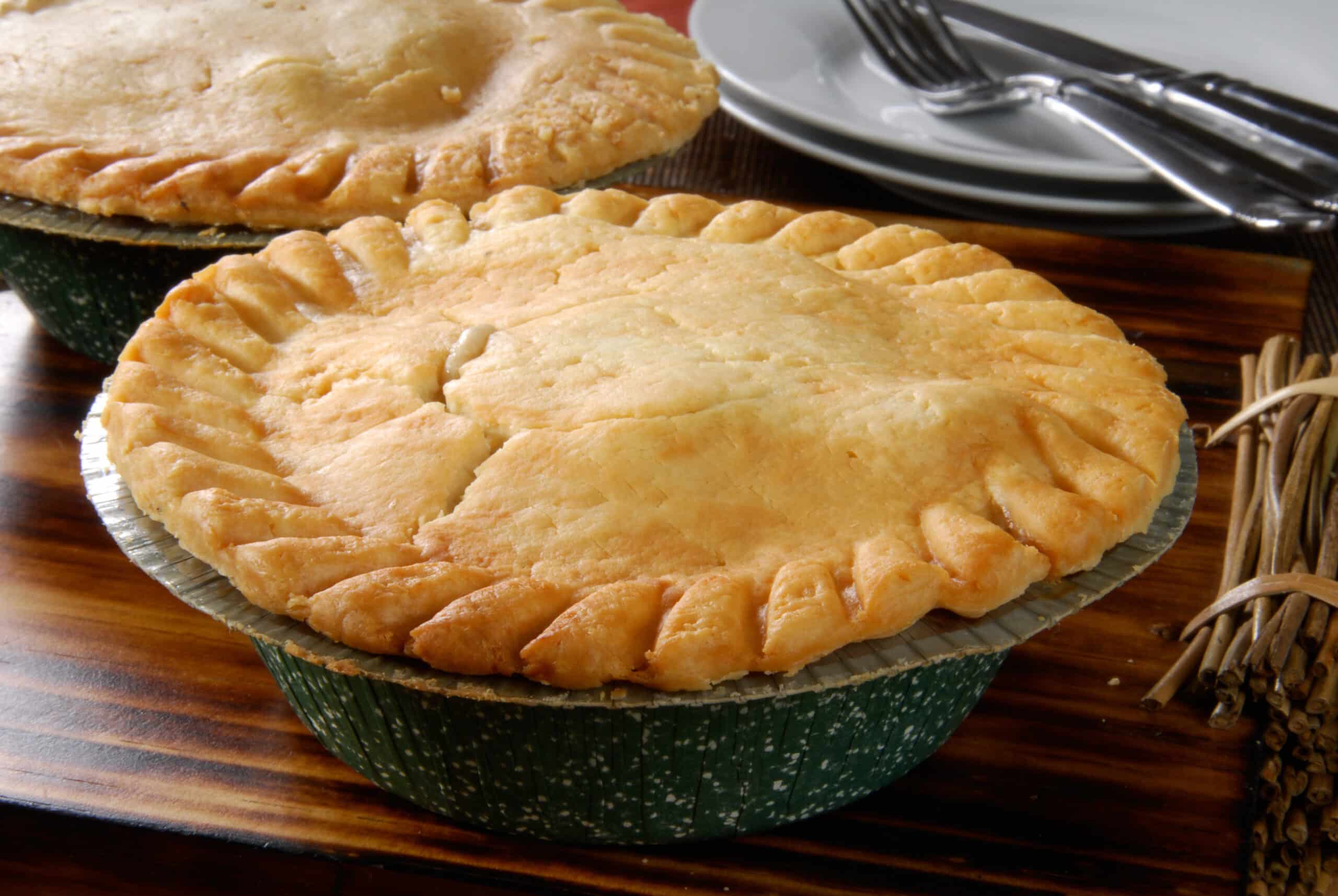
Say cheese! Not only does this pie hold up as a perfect vegetarian option, but it was a real comfort food for a difficult decade in American history.
What was great about cheese, potato, and onion pie, a traditional British meal, was how filling the dish could be for families.
These three ingredients were pantry staples, and could (and still can) be found in just about anyone’s kitchen. That made them easy to make in a pinch.
Did You Know? 🤓💡
Not to rain on your parade, but 1940s Cheese, Potato, and Onion Pie sometimes used very little actual cheese due to wartime rationing. The “cheesy” flavor might have originated from the clever use of cheese scraps or even cheese powder, a surprising substitution!
Meat and Potato Patties
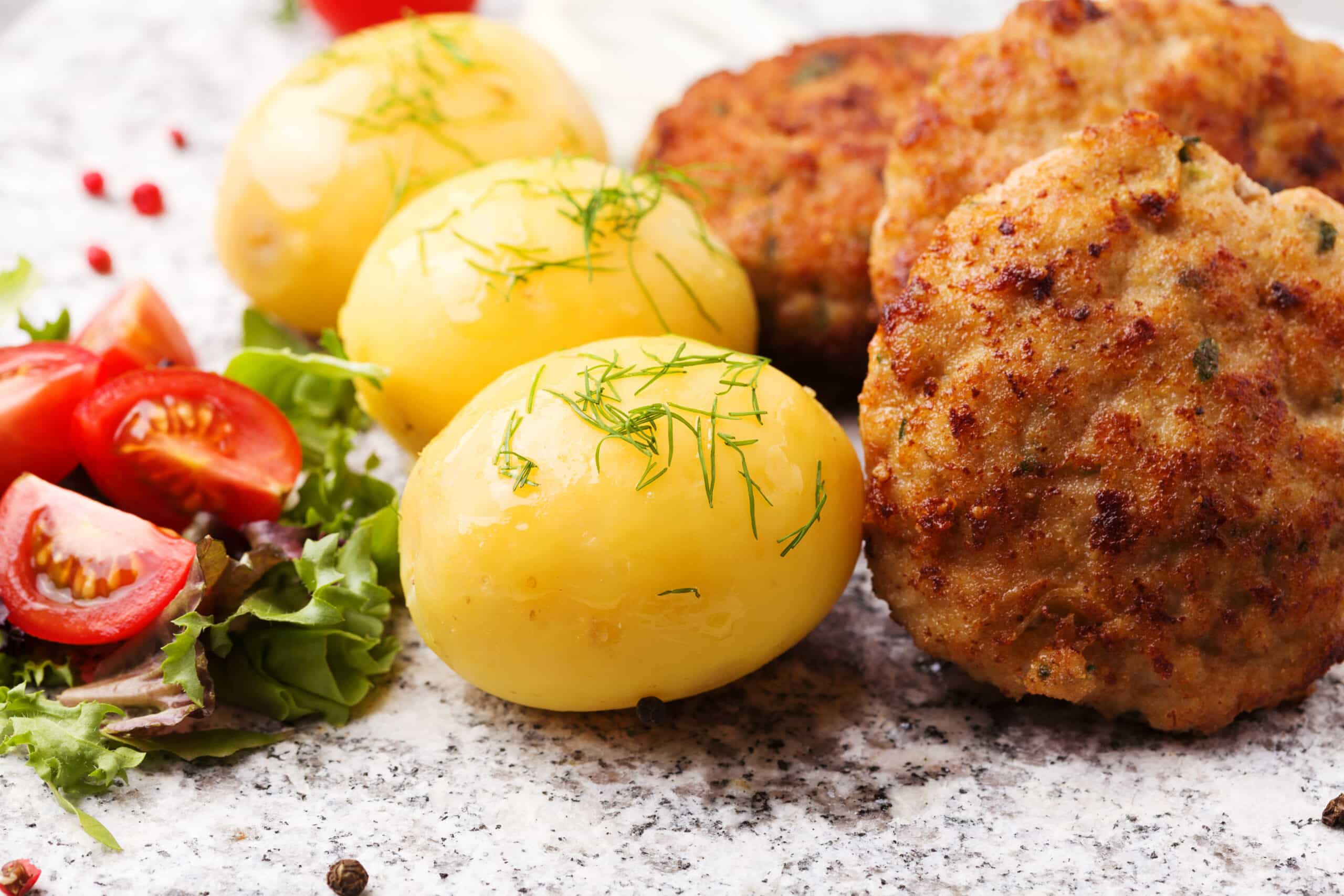
Gladys Klein, of Burlington, Wisconsin, has said, “When meat was rationed and had to be purchased with tokens, this recipe went a long way in feeding a family.”
She remembers really liking the taste as a child and still craves them. After all, it’s meat and potatoes — who wouldn’t?
There’s almost nothing you can’t add potatoes to and improve it by 50%. Meat patties are just one example of this phenomenon.
Did You Know? 🤓💡
1940s Meat and Potato Patties were often a clever way to stretch meager meat portions. Recipes sometimes included significantly more mashed potato than meat, creating a patty that was surprisingly light on the actual meat content. Don’t expect too much!
Cape Cod Bay Brown Bread
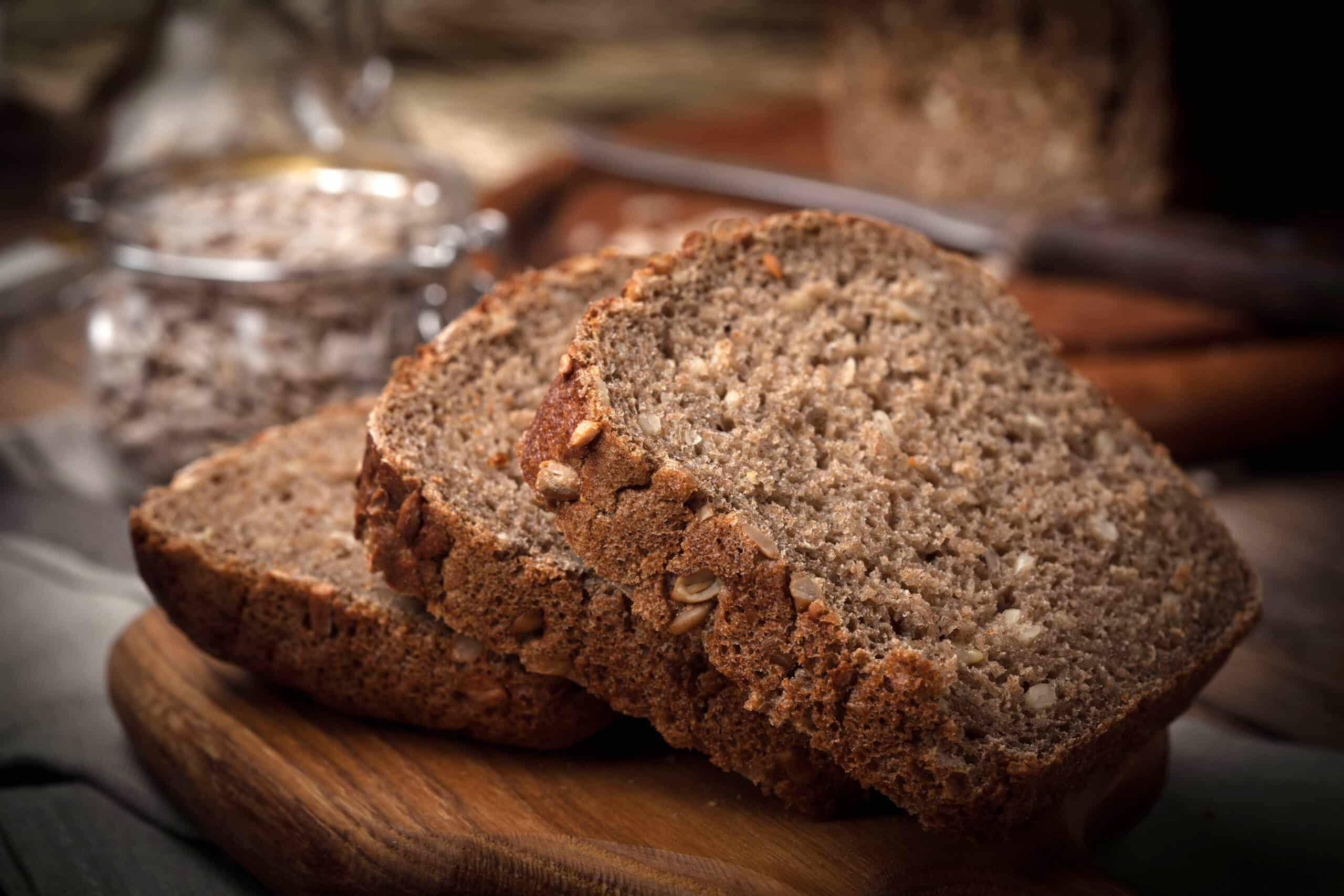
Just picturing eating a piece of this fresh brown bread out of the oven feels like you’re stepping into your grandmother’s kitchen.
Many bakers use molasses and agave nectar for an extra special touch, in addition to raisins or cranberries. Old-fashioned oats are also used.
This bread is filling and tasty, and while it may not be super easy to make (most breads aren’t), we can definitely see why it rose in popularity.
Did You Know? 🤓💡
The dark, almost black color of some 1940s Cape Cod Bay Brown Bread came not just from molasses but sometimes from the addition of coffee grounds or even malt extract, ingredients you might not expect in a loaf of bread!
Cornmeal Pancakes
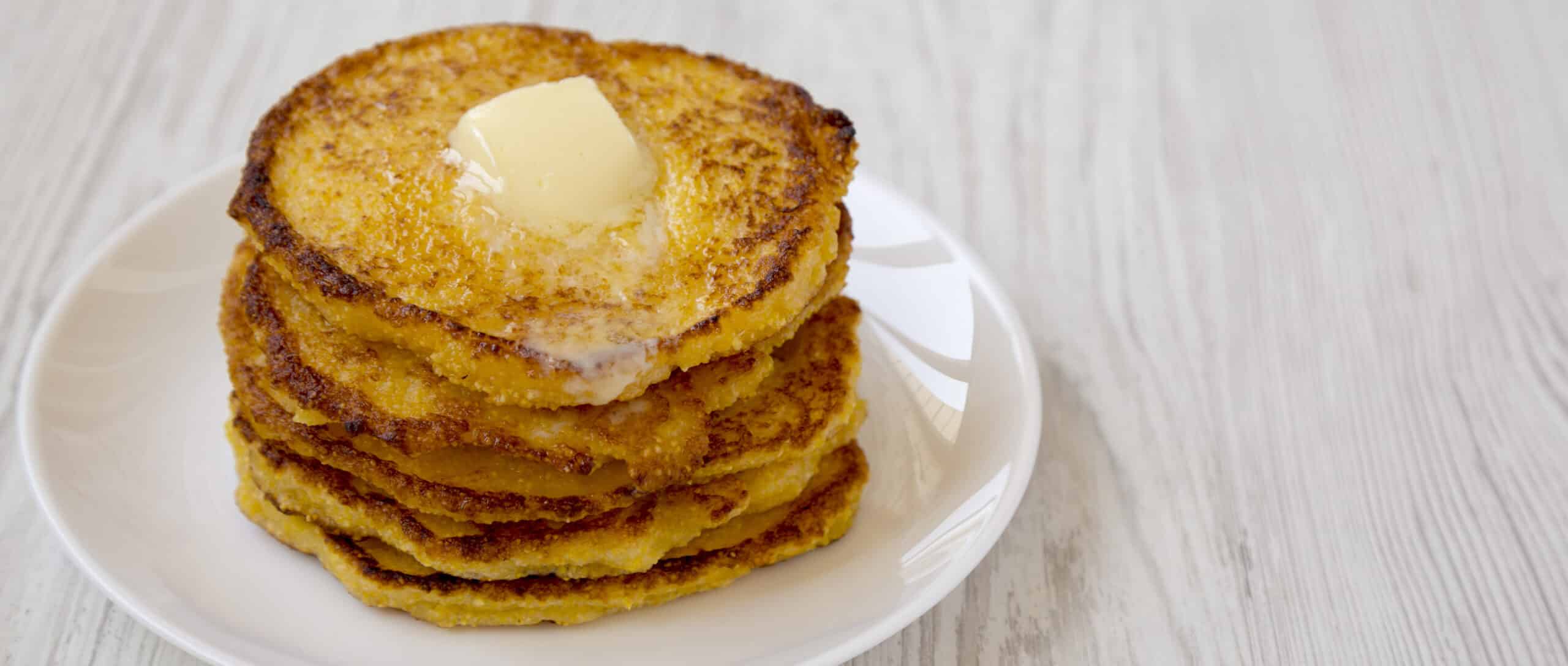
Blogger Sharon Brown says she remembers how food changed during WWII. While she had previously had large access to cornmeal, choices became more slim.
She recalls going to a restaurant and asking, “Where is the cornbread? And the waitress said, “Well, honey, we only got rolls, and light bread, we don’t serve cornbread.”
Luckily for Sharon, her grandmother was resourceful and taught her how to make her own cornbread, so she could bring it around with her.
Did You Know? 🤓💡
During wartime shortages, some 1940s cornmeal pancake recipes cleverly used rendered bacon fat instead of butter or oil for cooking, adding a savory richness that might surprise modern pancake purists.
Molasses Cookies
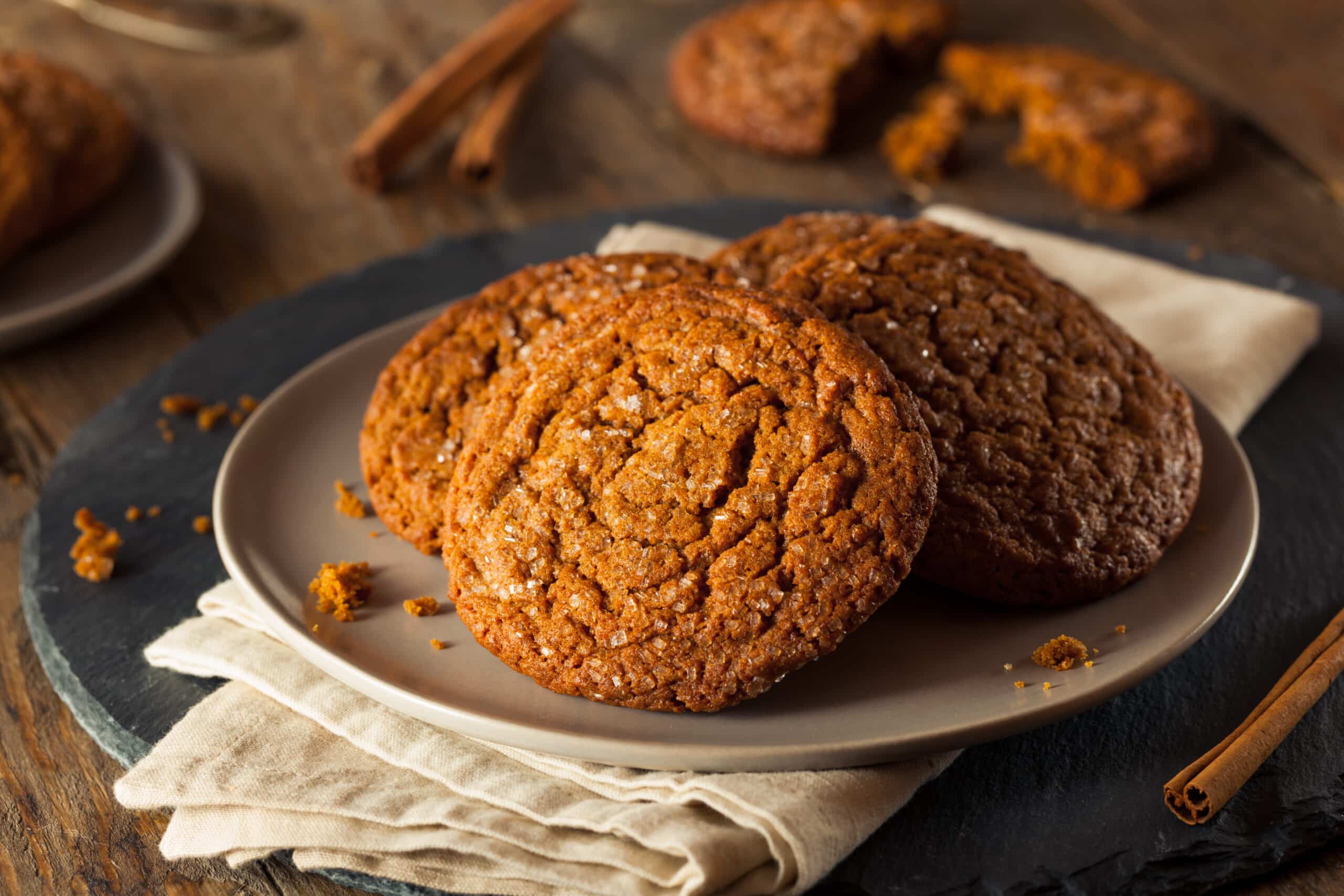
Cooking oils and other fats, too, were rationed, according to Times Colonist, since they were used to make glycerin, found in bombs.
So people had to get creative, and cookbooks often advised replacing sugar with liquid sweeteners such as maple syrup or honey.
One way people got creative in the kitchen was using molasses in cookies. People still make these today, although they’re not as widespread.
Did You Know? 🤓💡
Some 1940s Molasses Cookie recipes surprisingly called for a pinch of black pepper or even cayenne! To add a subtle warmth and depth of flavor with unexpected spice. Who would’ve thought?
Delicious Combination
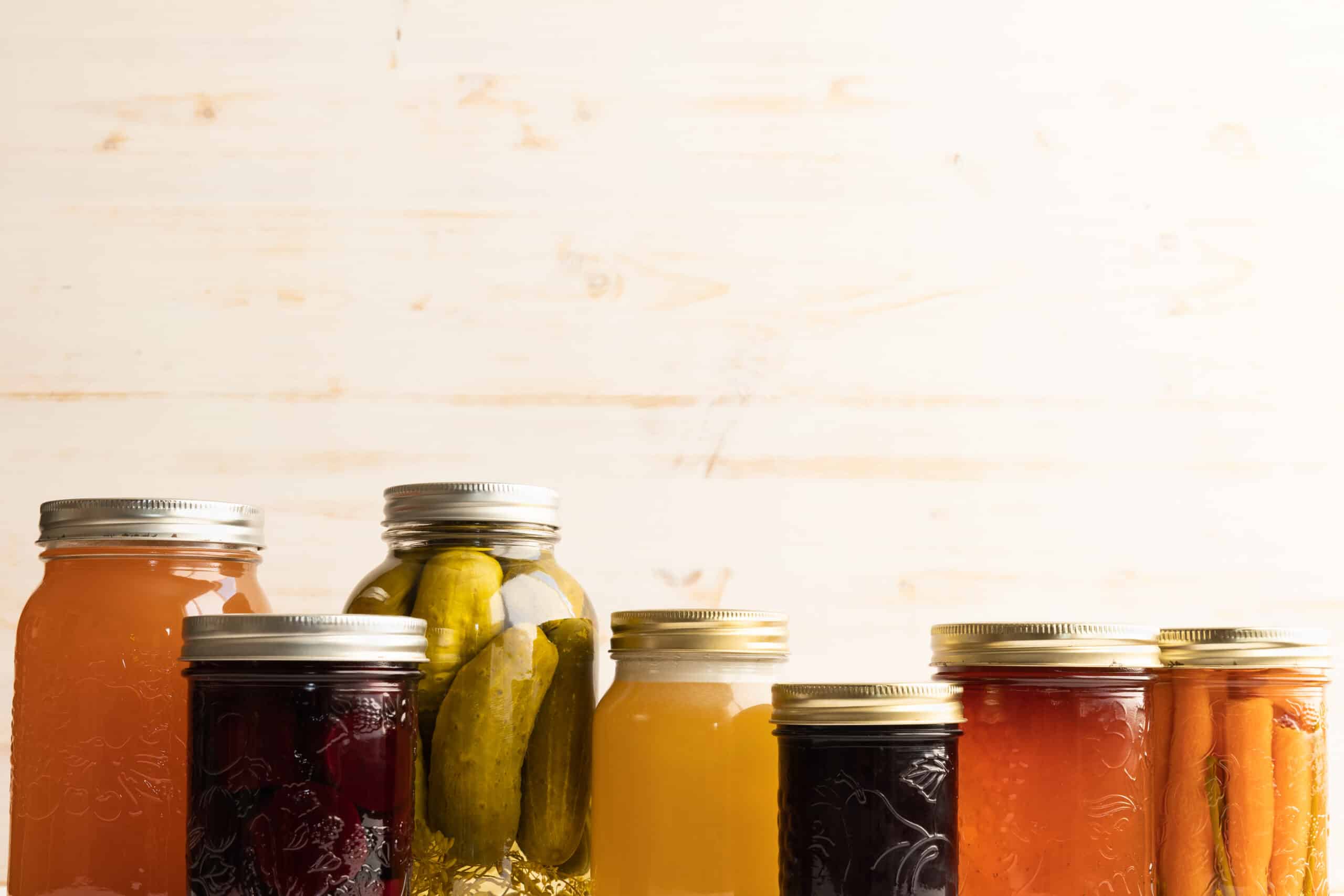
The name is more than deceiving. In the time period when ketchup became the most used prime flavoring ingredient, this dish became a thing.
Times Colonist shared cookbook authors advising people “slop together apples, canned peas, carrots, celery, pineapple and diced bananas along with some mayonnaise and whipping cream…”
Then, they were told to “[serve] it on a platter slathered with more mayonnaise and garnished it with a ring of maraschino cherries.” Excuse us, while we gag.
Did You Know? 🤓💡
The name “Delicious Combination” was often used for a variety of surprisingly strange food pairings in the 1940s, suggesting a wartime spirit of experimentation (or perhaps desperation) in the kitchen, with recipes varying wildly by household!
Panned Curried Cabbage
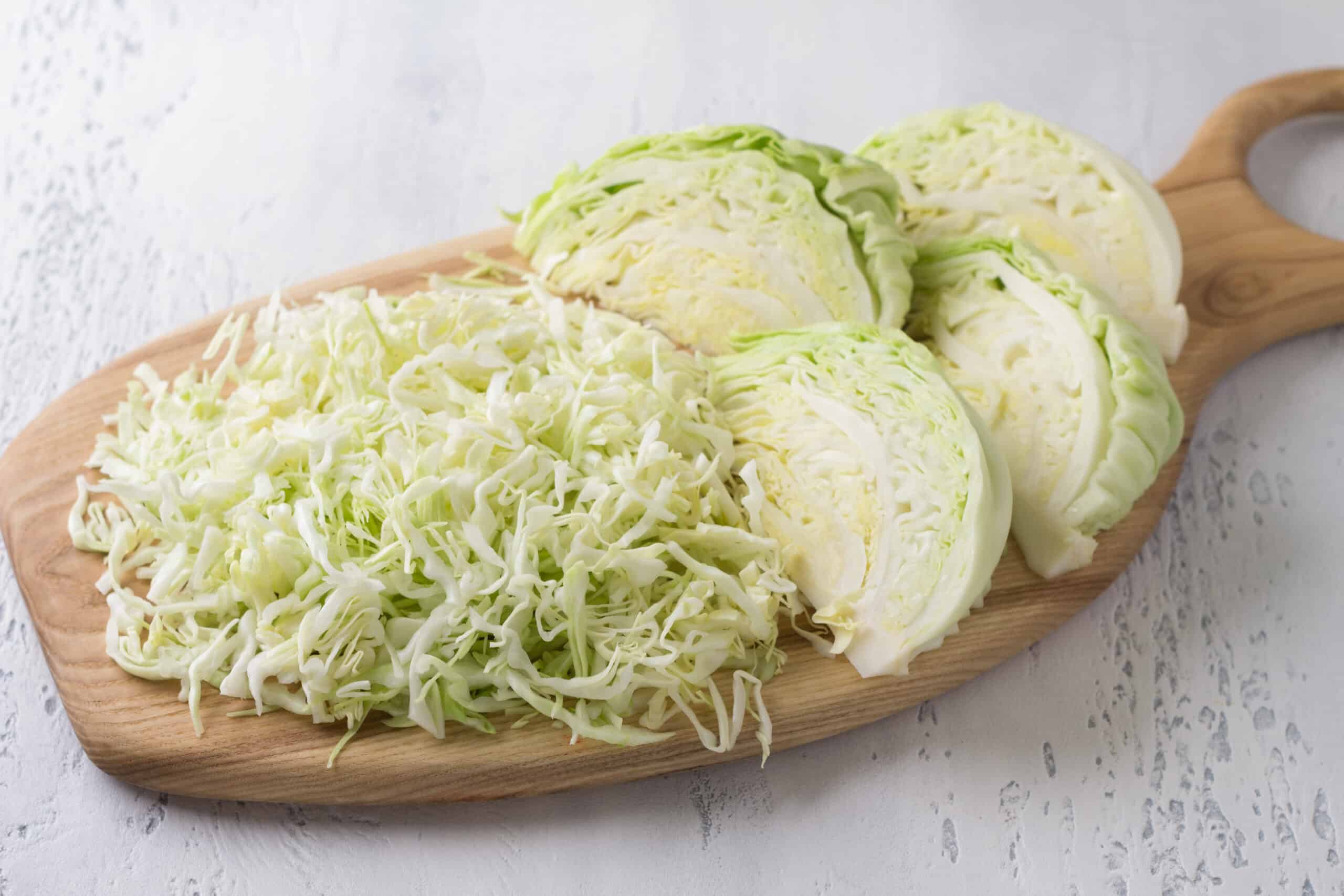
They were trying curry powder on everything in the 40s, and cabbage became a common and particularly good pairing for it.
To make this all you had to have was a large skillet, shredded green cabbage, curry powder, and if you were lucky some diced tomatoes.
Honestly, this really doesn’t sound too bad. The curry powder probably does all the heavy lifting, though. What did you think of this blast from the past?
Did You Know? 🤓💡
To make panned curried cabbage more substantial during the 1940s, some recipes surprisingly included additions like leftover chopped hot dogs or canned luncheon meat, transforming a simple vegetable dish into a more filling meal.
Mulligatawny Soup
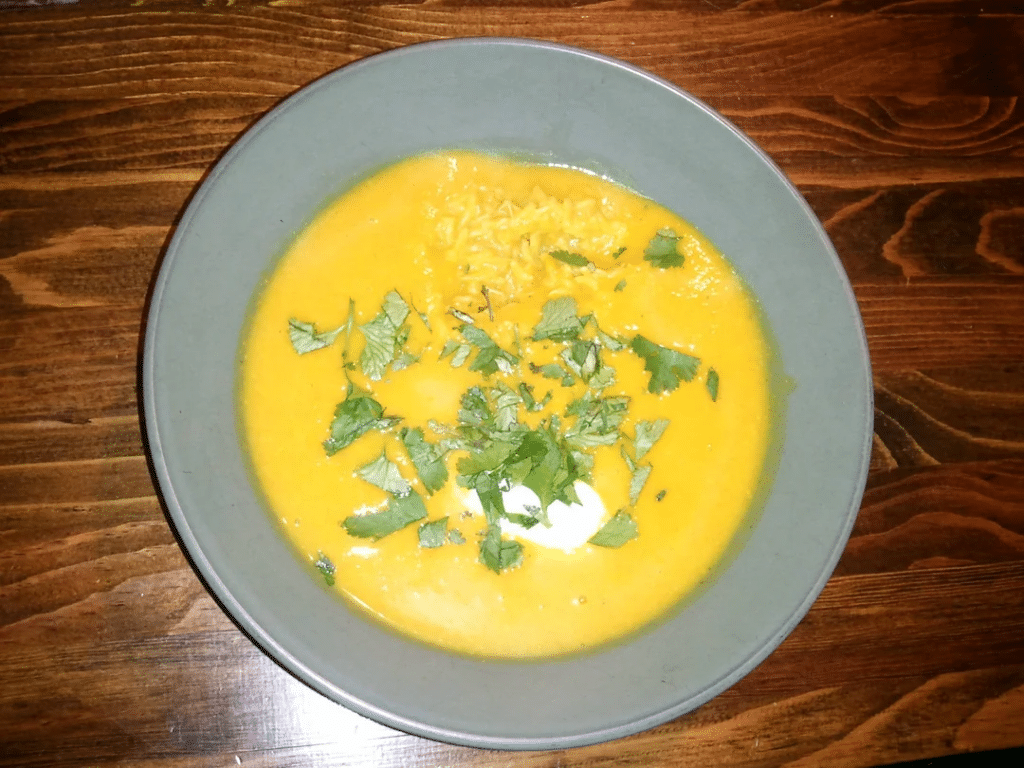
Mulligatawny soup is a culinary rollercoaster of spices, history, and sheer deliciousness. Born from British-Indian fusion, this soup blends creamy, curry-kissed broth with lentils, chicken, and occasional apples. YES, APPLES!
The name literally means “pepper water”, but don’t let that fool you—this soup isn’t just spicy; it’s a warm, comforting hug in a bowl. With coconut milk, garlic, and a hint of tang, it’s pure magic.
Every spoonful tastes like adventure, with layers of flavor unfolding like a good novel. Whether you slurp it traditionally or tweak it wildly, one thing’s certain: mulligatawny soup never disappoints!
Did You Know? 🤓💡
Some 1940s Mulligatawny Soup recipes surprisingly called for a thickening agent like rice or even breadcrumbs, resulting in a much heartier, almost stew-like consistency compared to the thinner soups we often see today.
Frosted Raisin Spice Cake

If there’s a time machine to take you back to your grandma’s kitchen, this is it! A cinnamon-scented time machine! Frosted Raisin Spice Cake is packed with plump raisins, nutmeg, and cloves.
That sweet, creamy frosting draped over the top like a cozy sweater—it’s like autumn decided to throw a party. It doesn’t matter if it’s buttercream, cream cheese, or a simple glaze—it’s just so irresistible.
One bite and you’re hooked—soft, spiced, and just sweet enough to keep you coming back. It’s the dessert equivalent of a hug, best enjoyed with coffee, nostalgia, and zero regrets!
Did You Know? 🤓💡
The “frosting” on some 1940s Frosted Raisin Spice Cakes was surprisingly simple, sometimes just a mixture of powdered sugar and milk or water, truly different from the richer, butter-cream frostings we often see today.
Graham Bread
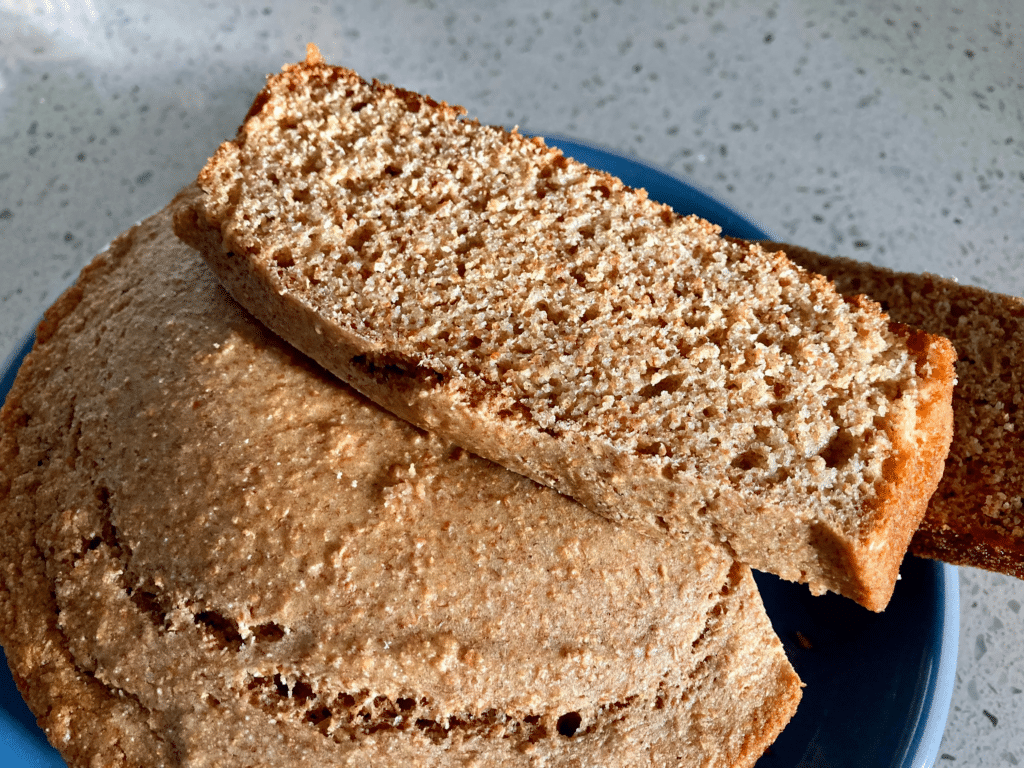
Made with graham flour (yes, the same stuff in graham crackers), Graham Bread is nutty, slightly sweet, and deeply satisfying. It is a hearty, wholesome masterpiece born from the 19th-century health food craze.
Loaded with fiber and whole wheat goodness, it was Dr. Sylvester Graham’s answer to bland, overprocessed bread. Little did he know, he had accidentally created a loaf that was both nutritious and shockingly delicious.
Sliced, toasted, or slathered in butter, this earthy, no-nonsense bread proves that simple ingredients can be truly epic. Plus, eating it makes you feel just a little bit superior—because, you know, history.
Did You Know? 🤓💡
Introduced as the healthier alternative to white bread, the truth is that some 1940s Graham Bread recipes surprisingly included molasses or brown sugar for sweetness, making it less purely a “health food” than one might assume today.
Casserole of Summer Squash

Summer squash may seem like a sidekick, but in this cheesy, golden casserole, it takes center stage. Tender squash, buttery breadcrumbs, and melted cheese come together for finger-licking baked perfection.
Light yet rich, this dish feels indulgent but won’t knock you into a food coma. It’s the perfect blend of crispy and creamy, making even squash skeptics reach for seconds.
It’s up to you if you serve it at Sunday dinner or a summer barbecue, one thing’s certain—this casserole is the secret weapon of potlucks. Who knew squash could be this irresistible?
Did You Know? 🤓💡
Casserole of Summer Squash in the 1940s sometimes surprisingly incorporated crushed crackers or breadcrumbs, not just as a topping, but mixed into the casserole to extend the dish during times of scarcity.
Baked Caramel Custard
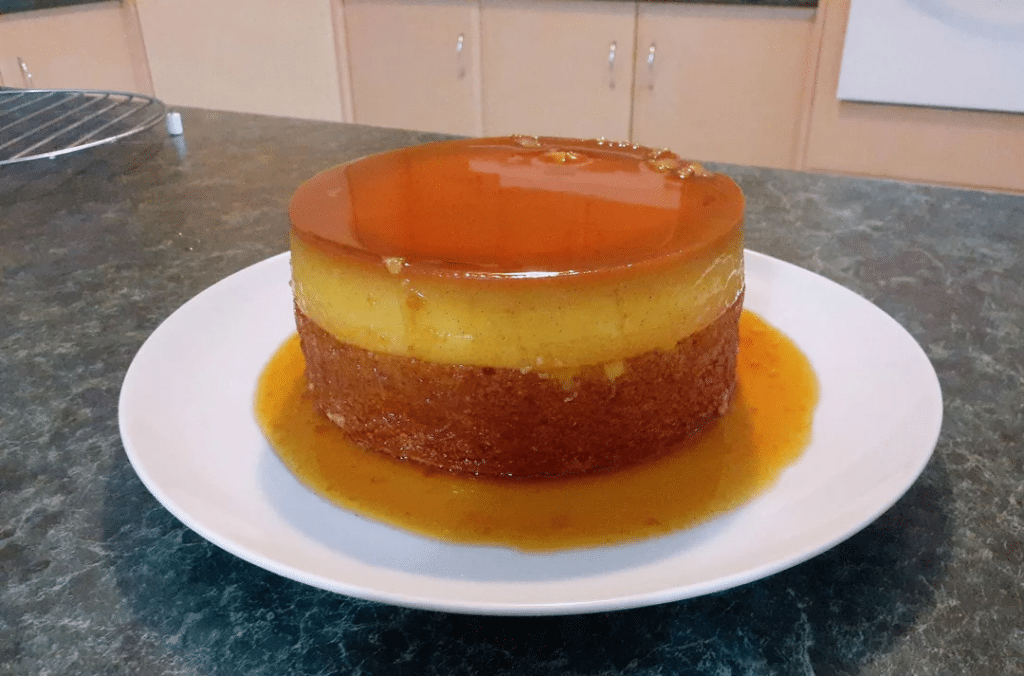
Yum! Still one of our favorites up to this day! With its golden caramel top and smooth, velvety texture, every bite of baked caramel melts in your mouth like a dream.
The magic happens when sugar transforms into rich, amber caramel, coating the custard with a hint of bittersweet depth. It’s fancy enough for dinner parties but easy enough for Tuesday nights.
Served warm or chilled, this timeless classic is proof that sometimes, the simplest ingredients—milk, eggs, sugar—create the most irresistible, can’t-stop-eating-this perfection. Get your spoons ready!
Did You Know? 🤓💡
The “caramel” in some 1940s Baked Caramel Custards wasn’t always made separately! Some thrifty recipes surprisingly instructed cooks to simply heavily sweeten the custard base, hoping it would caramelize slightly during baking – a less precise but economical approach.
Welsh Rabbit
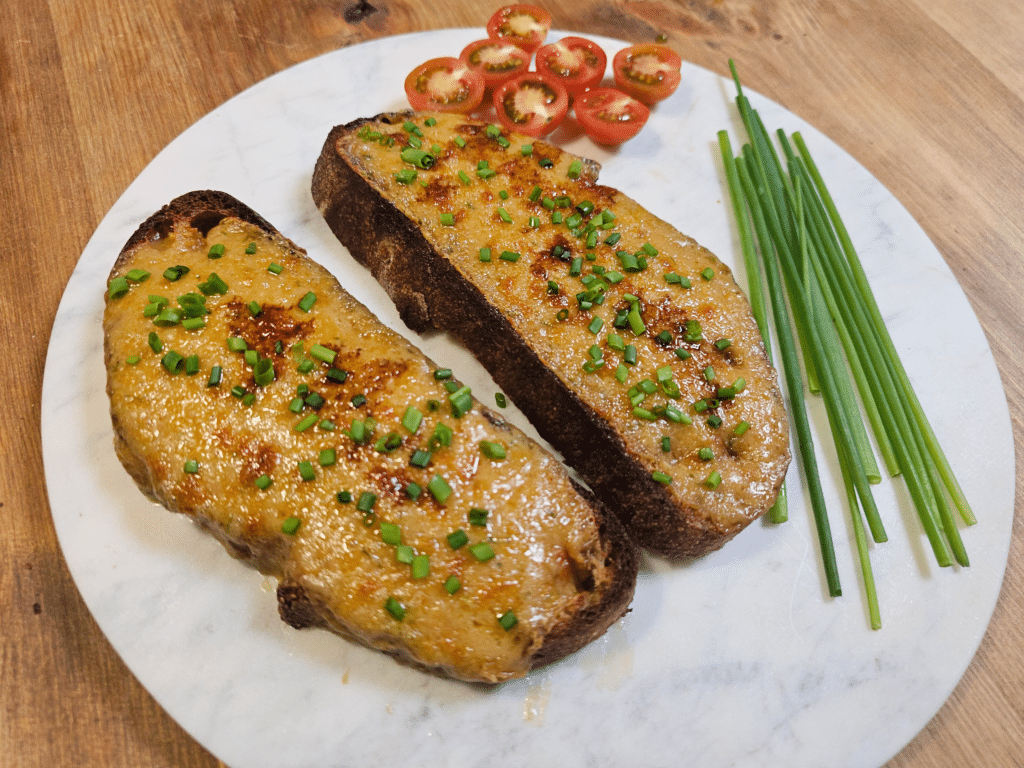
Despite what its name suggests, NO BUNNIES WERE HARMED in the making of Welsh Rabbit. Instead, this dish is a glorious, melted-cheese-covered toast situation, proving once and for all that simple food can be legendary.
It’s basically a cheesy, beer-infused sauce poured over crisp bread, because why stop at just buttering your toast when you can drown it in molten dairy goodness? Rich, tangy, and slightly boozy—it’s pure comfort.
You can call it Welsh Rarebit (the fancy version) or Welsh Rabbit (the fun version). Just don’t forget the Welsh because this dish proves that the Welsh knew exactly what they were doing with cheese.
Did You Know? 🤓💡
Some 1940s Welsh Rabbit recipes, surprisingly, suggested using processed cheese slices to make the sauce. It’s cheap, practical, and mostly available during those times! You don’t need to be that fancy!
Zebra Cakes
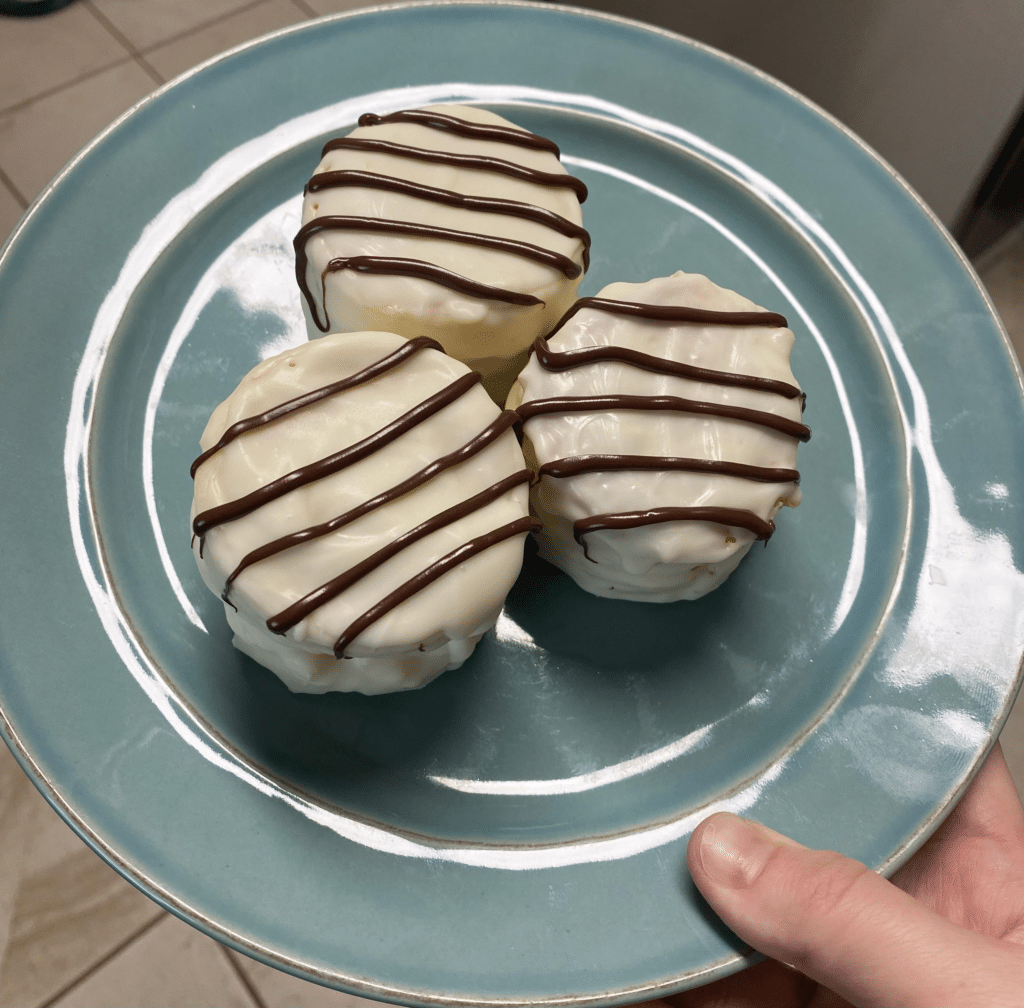
They usually describe this cake as nostalgia wrapped in frosting. With layers of fluffy vanilla cake, creamy filling, and that signature chocolate-striped shell, Zebra Cakes are basically the snack cake equivalent of a party.
Each bite is a perfect balance of soft, sweet, and slightly artificial (in the best way possible). They’re the childhood lunchbox MVP, the guilty pleasure of adulthood, and the reason self-restraint is so overrated.
Some eat them in dainty bites or demolish them in two seconds. How would you eat yours? Nonetheless, Zebra Cakes are the striped, sugary proof that Little Debbie is a genius!
Did You Know? 🤓💡
Zebra Cakes weren’t always the vanilla treats we know! Early versions surprisingly featured a chocolate cake base with white icing stripes, a reversed color scheme that might shock today’s snack enthusiasts!
Bratwurst Supper
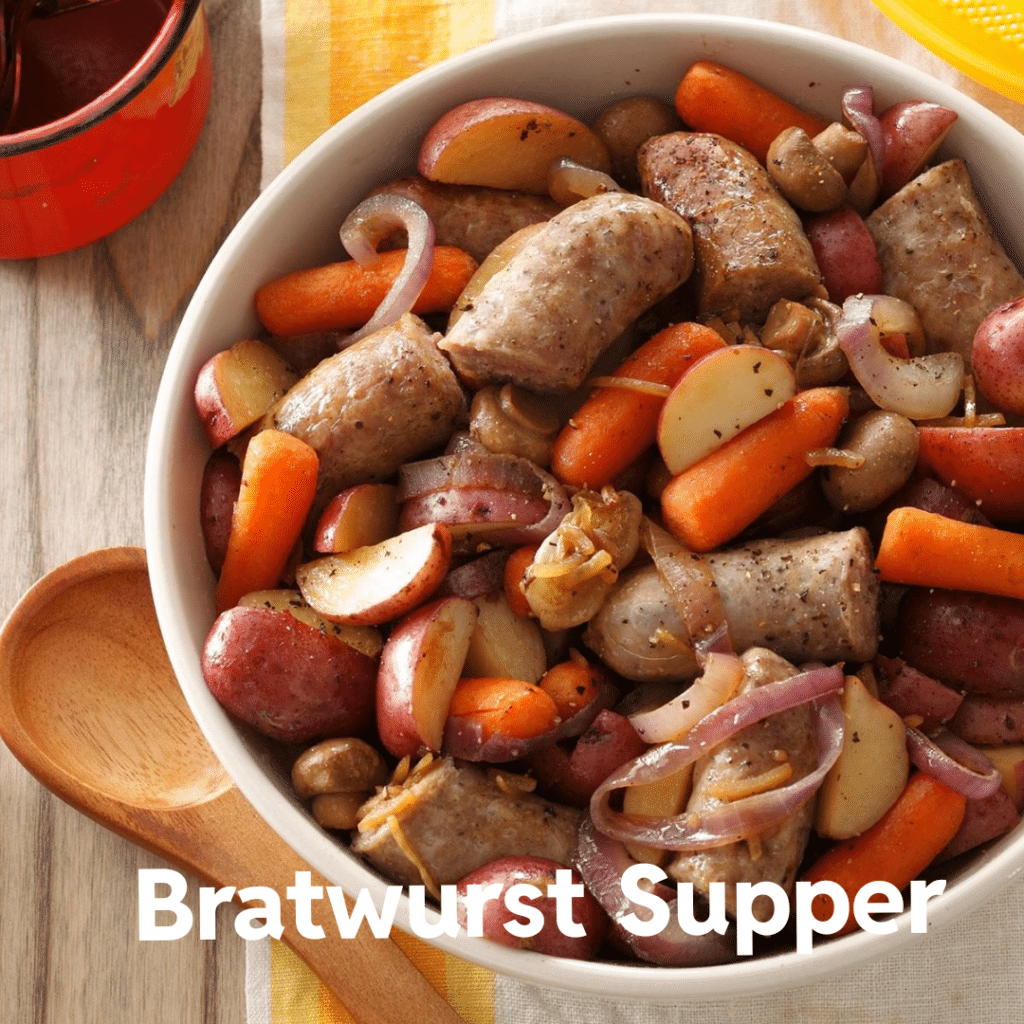
Juicy, sizzling bratwurst paired with caramelized onions, tangy mustard, and maybe some sauerkraut? That’s a one-way ticket to comfort food paradise!
Usually grilled to perfection or simmered in beer (because why not?). Toss in some buttery mashed potatoes or a warm pretzel, and congratulations—you’ve just mastered the art of hearty eating.
Perfect for backyard cookouts, chilly nights, or anytime you crave a meal that sticks to your ribs—a bratwurst supper is simple, satisfying, and unapologetically delicious. Forks optional, but highly recommended.
Did You Know? 🤓💡
Surprisingly, some 1940s Bratwurst Supper recipes often include a topping of crumbled bread or cracker crumbs, adding texture and helping to absorb any excess liquid —a resourceful way to utilize stale items.
Mushroom Pea Casserole

Mushroom pea casserole is what happens when earthy mushrooms, sweet peas, and a creamy, cheesy sauce decide to throw a cozy little party in your oven. It’s rich, simple, and impossible to resist.
The mushrooms bring a savory, umami punch, the peas add a pop of sweetness, and the whole thing is bound together by a luscious sauce that practically begs for a crunchy topping. Breadcrumbs? Fried onions? Yes, please.
It’s the perfect side dish or sneaky main course, proving that vegetables can, in fact, be completely indulgent. Serve it up, watch it disappear, and prepare for no leftovers.
Did You Know? 🤓💡
Well, in the 1940s, people didn’t use freshly-picked mushrooms for this recipe. Instead, the mushrooms surprisingly came from a can! Fresh mushrooms were a luxury for many.
Sally Lunn
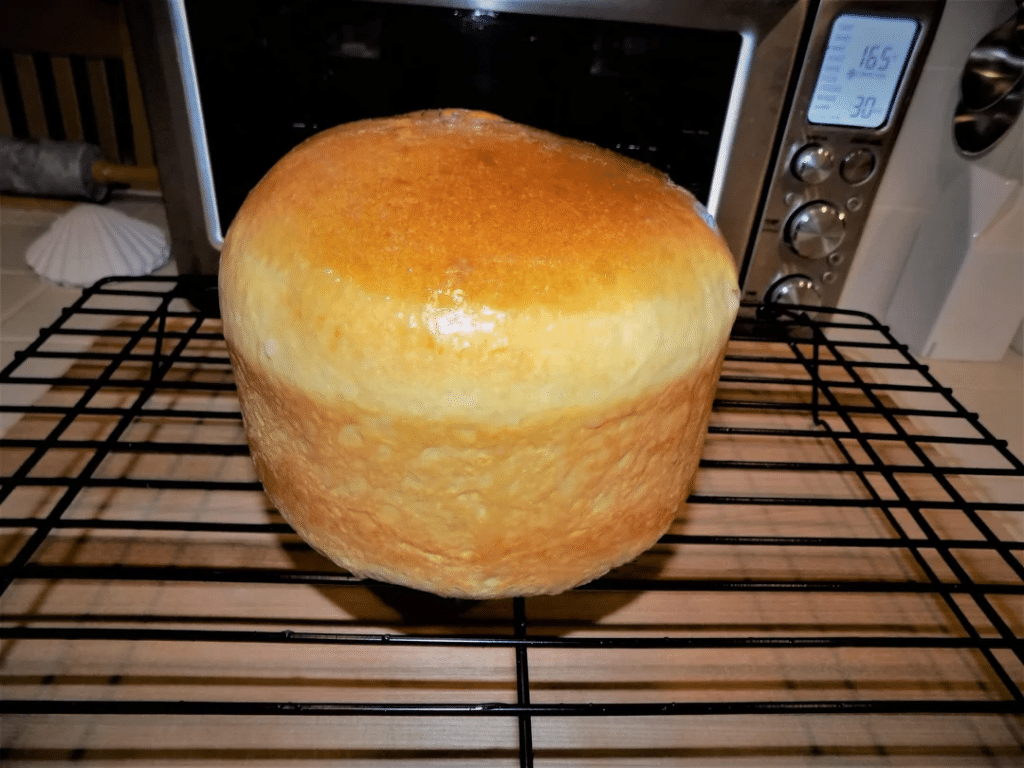
A fluffy, slightly sweet masterpiece that straddles the line between cake and dinner roll. With its golden crust and soft, pillowy inside, welcome to pure carb heaven!
Originating in 17th-century England, this rich, eggy bread became a legend, beloved for its buttery flavor and ability to make any meal instantly fancier. Toast it, slather it with jam, or just eat it plain—it’s that good.
Sally Lunn is the queen of breads, and we should all bow accordingly. Typically served during breakfast, alongside tea, but if you’re a bit rebellious…. try the Sunday supper!
Did You Know? 🤓💡
Some Sally Lunn recipes incorporated mashed potatoes into the dough! Very unusual for a bread recipe, eh? But to their defense, this unexpected ingredient helped create a moist crumb and extend the bread during wartime.
What’s Your Favorite 1940s Delicacy?

Have you tried any of these interesting or familiar foods from the Flying Forties? Which one would you choose if you had to travel back in time?
Personally, we’re most intrigued by that delicious gold nugget cake. But at the same time, our curiosity is certainly piqued by the deviled lobster.
One thing is for sure, and that’s that people in the ’40s were creative with their food. Guess you had to be when you were living on rations.
